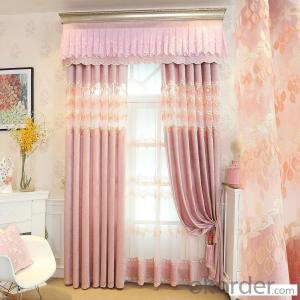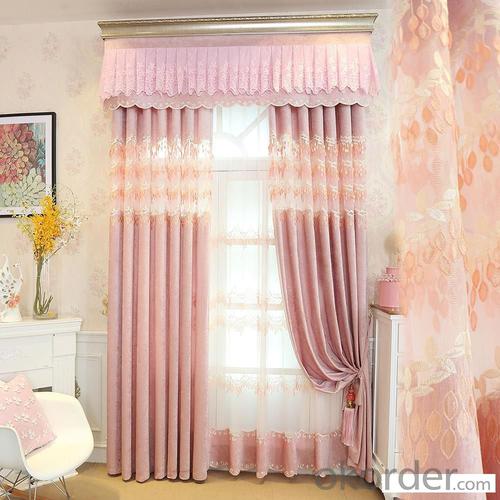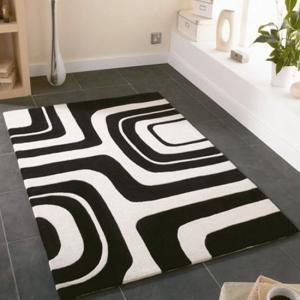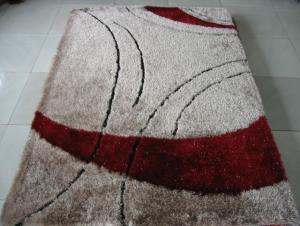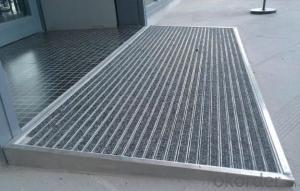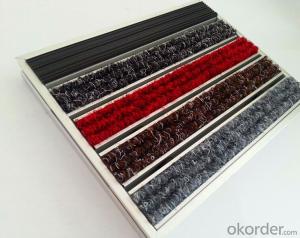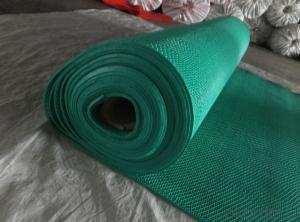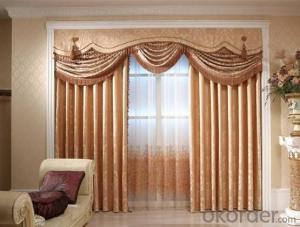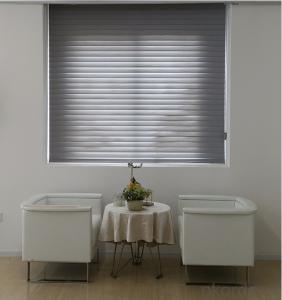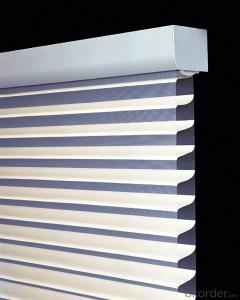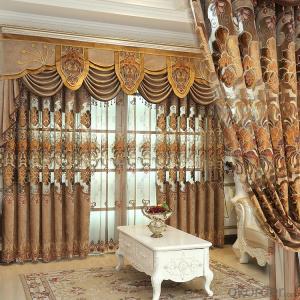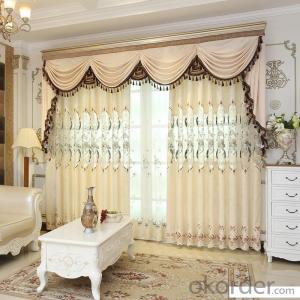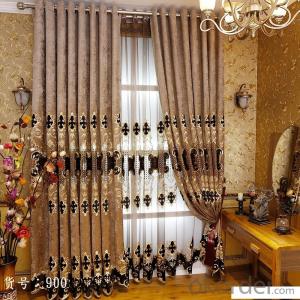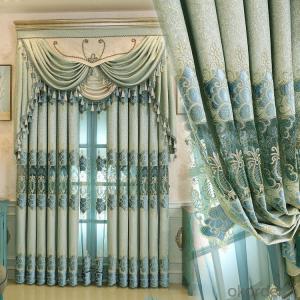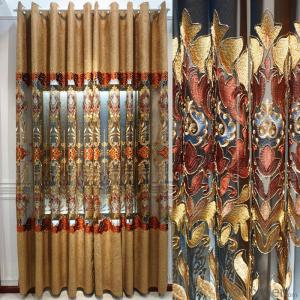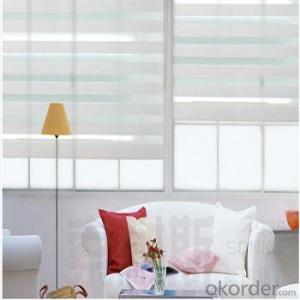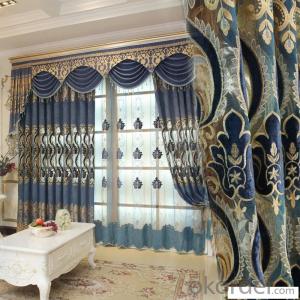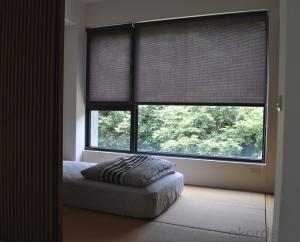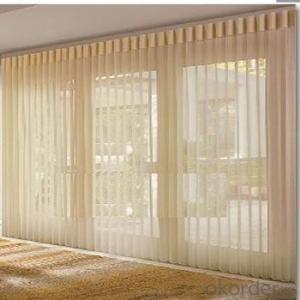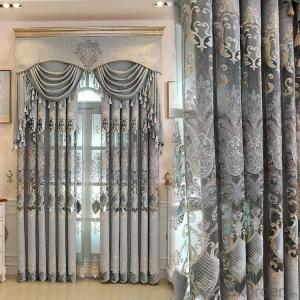Home curtain hotel curtain blackout curtain thick chenille pink curtain fabric
- Loading Port:
- Shanghai
- Payment Terms:
- TT OR LC
- Min Order Qty:
- 10 m
- Supply Capability:
- 9000 m/month
OKorder Service Pledge
OKorder Financial Service
You Might Also Like
| Product name | Chenille European pastoral wind embroidered curtain fabric |
| Design | Chenille |
| Width | 270-280cm |
| MOQ | 10m |
| Used | For window curtain |
| Delivery time | 3-5 days if instock |
| Shipping fee | The cheapest by air or by sea |
| Package | Elastic bags and woven bags |
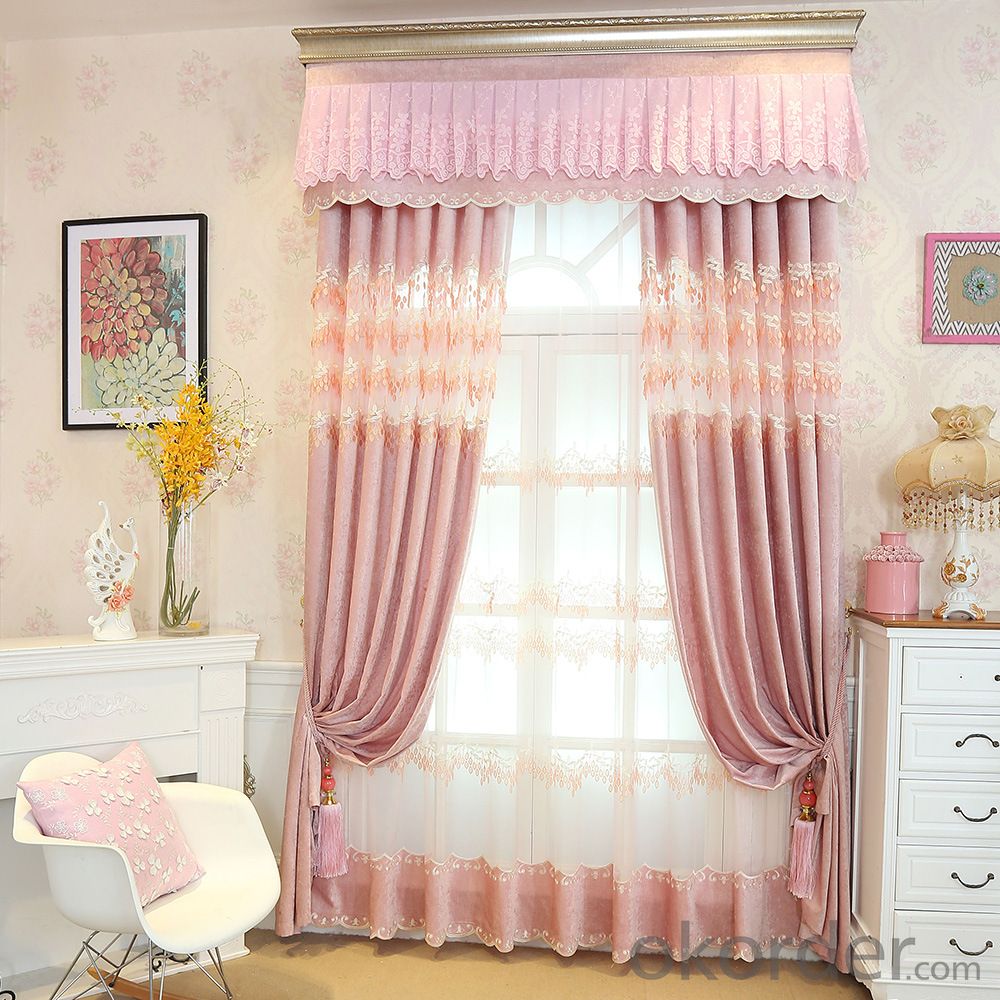
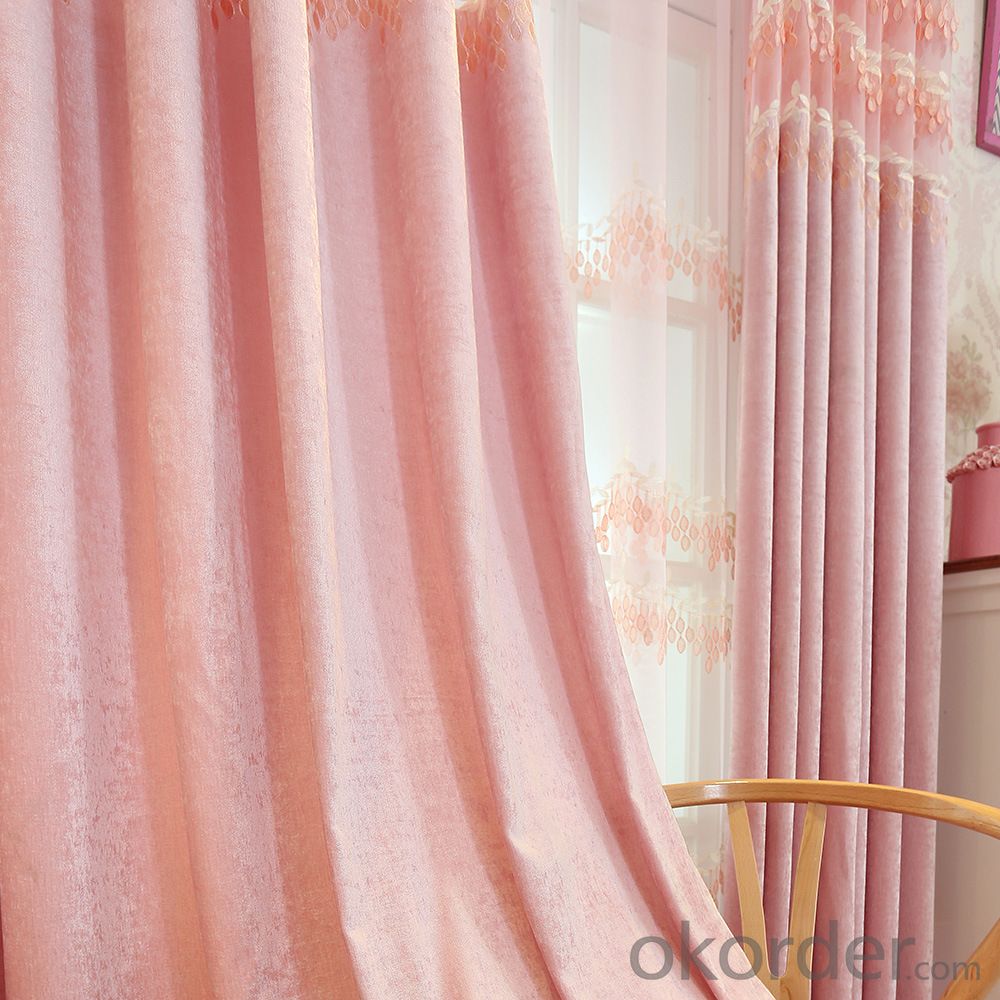
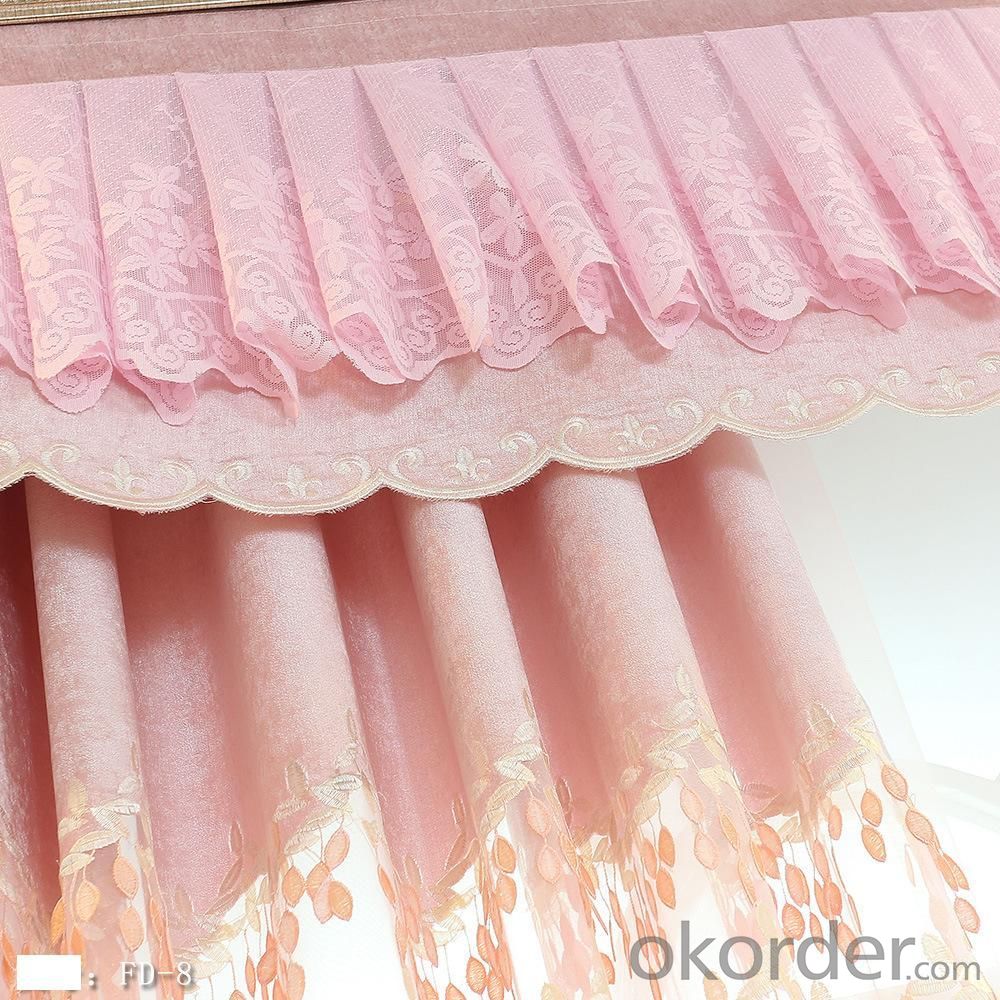

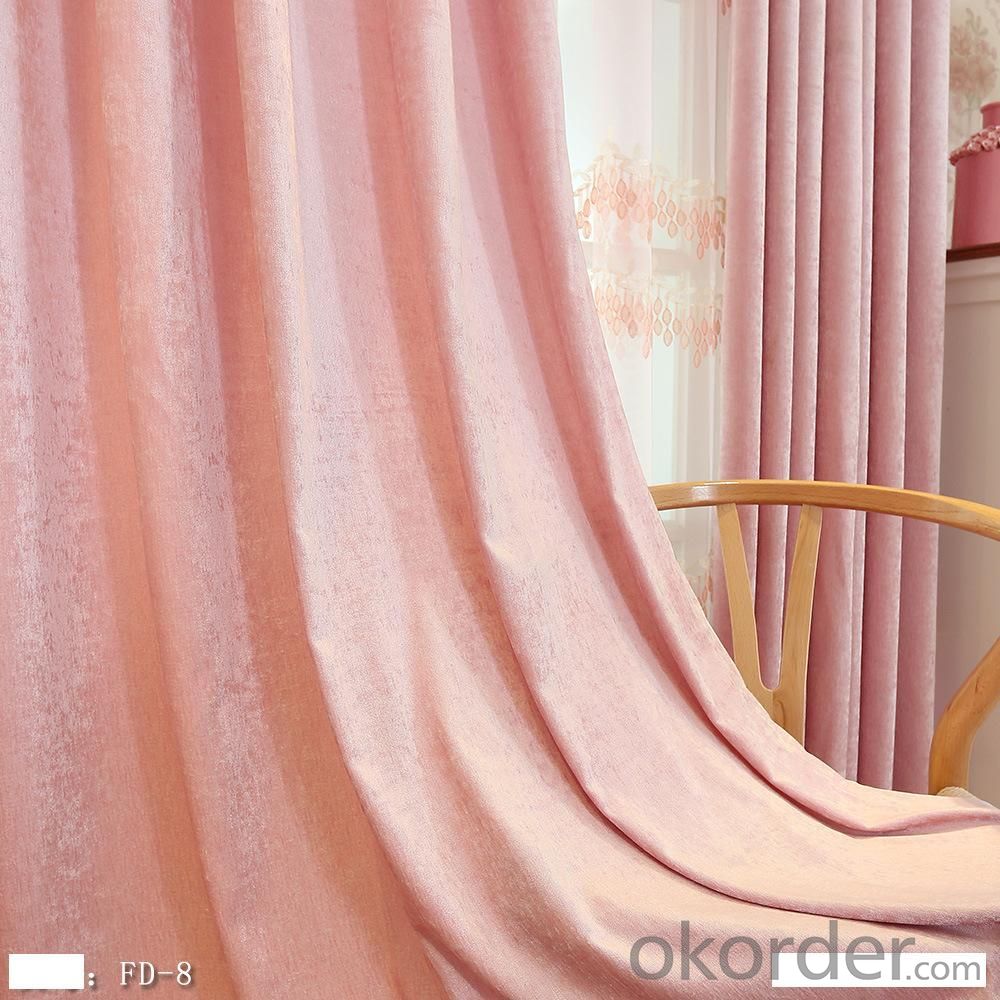
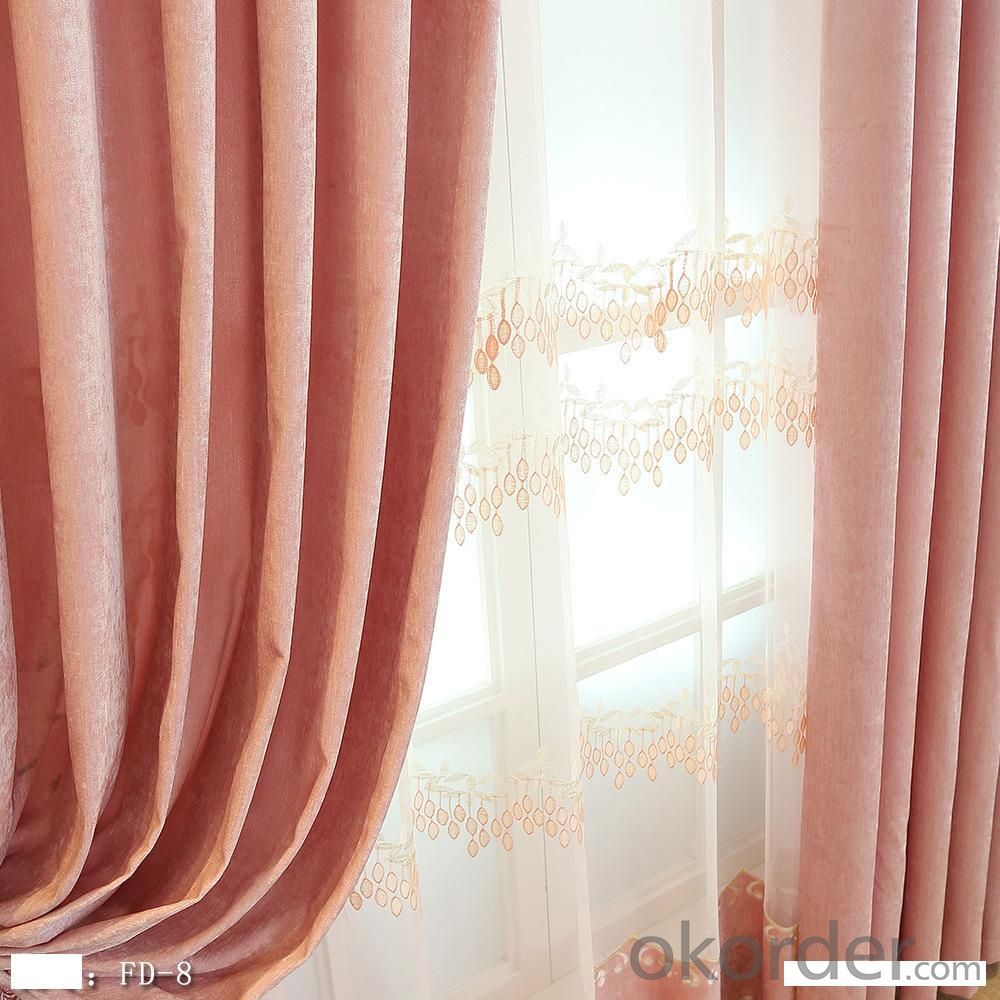
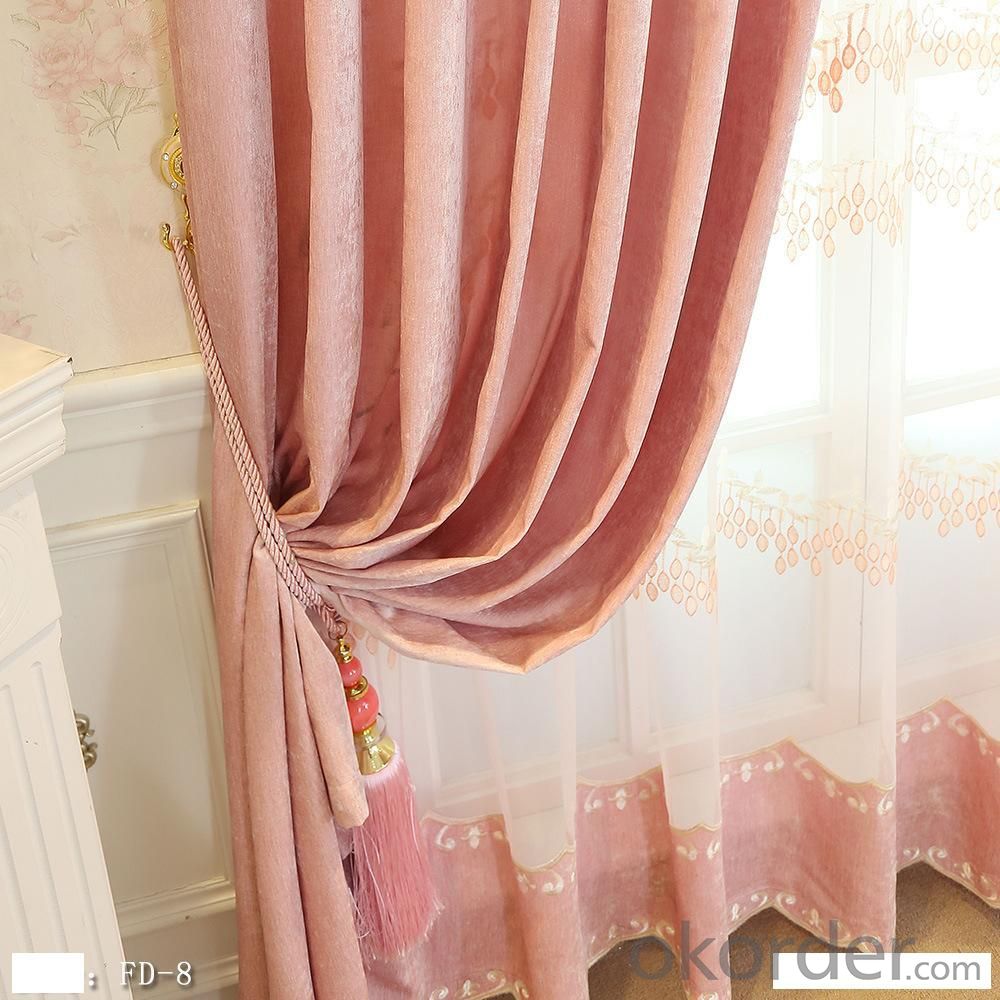


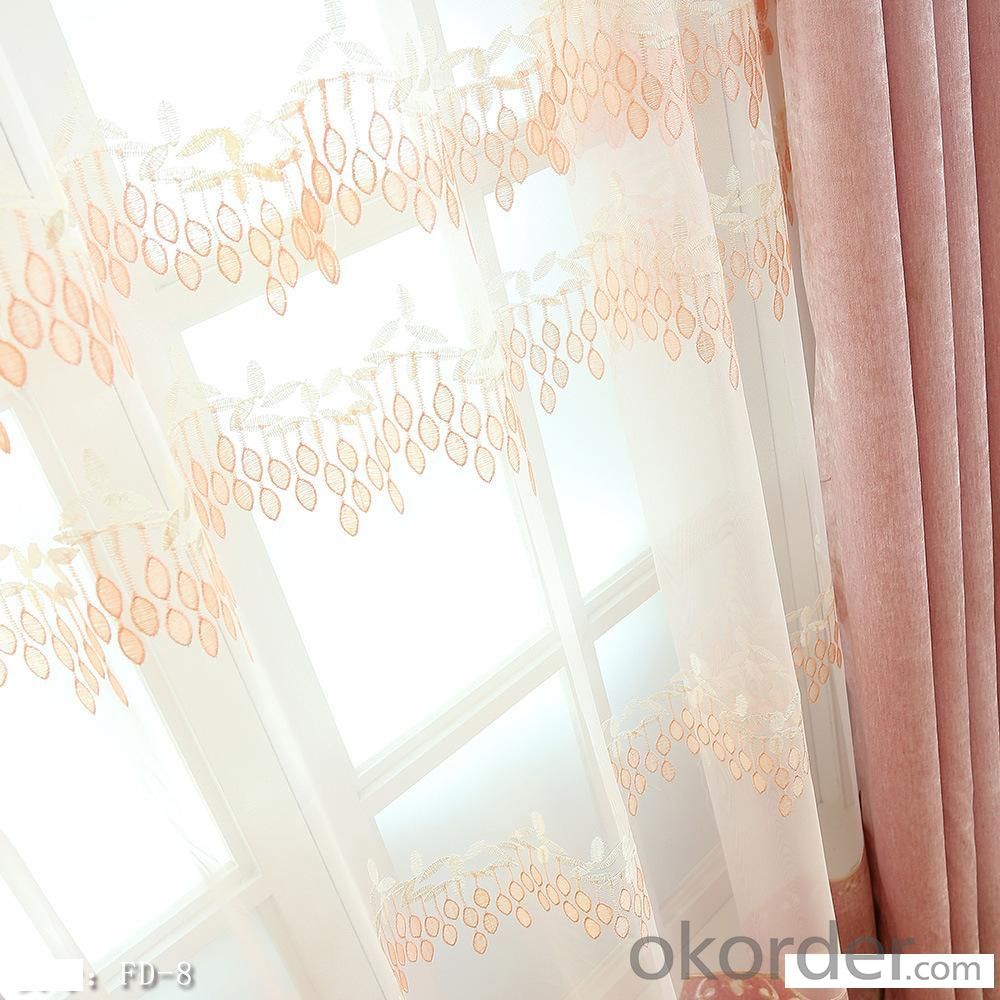

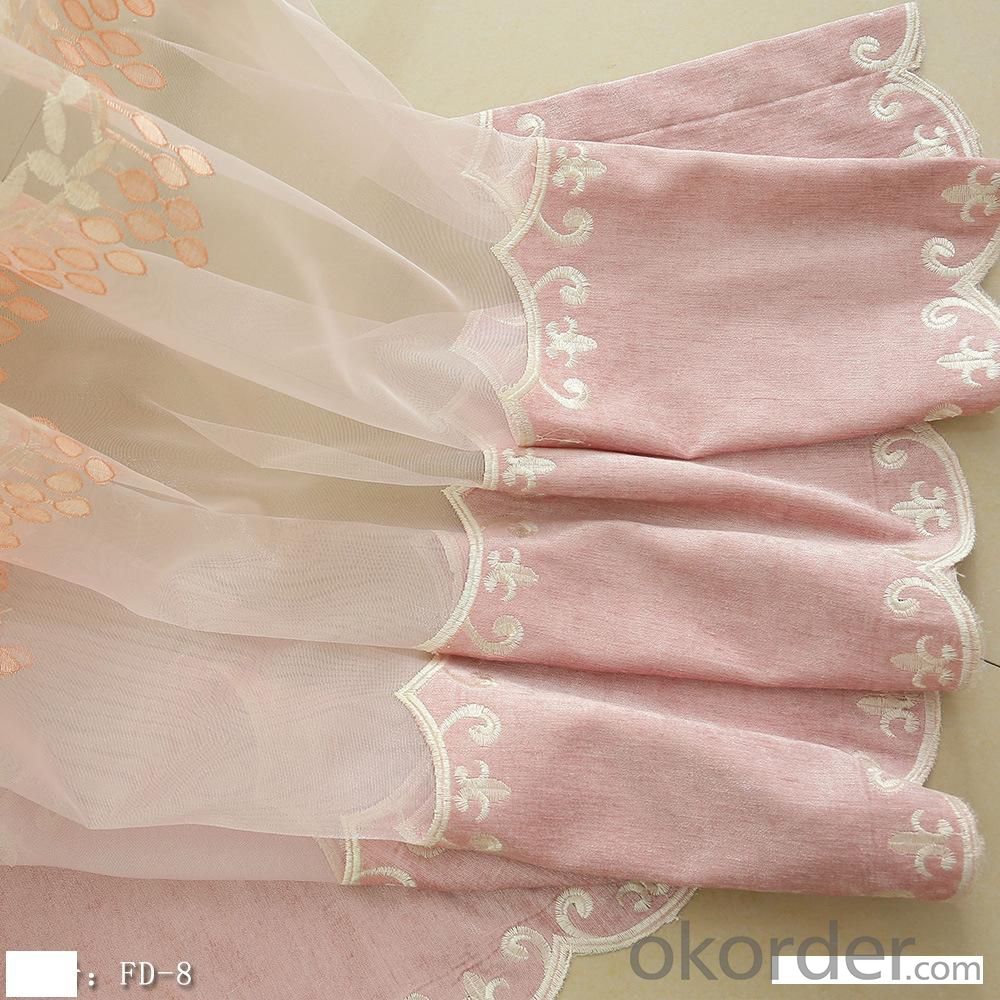
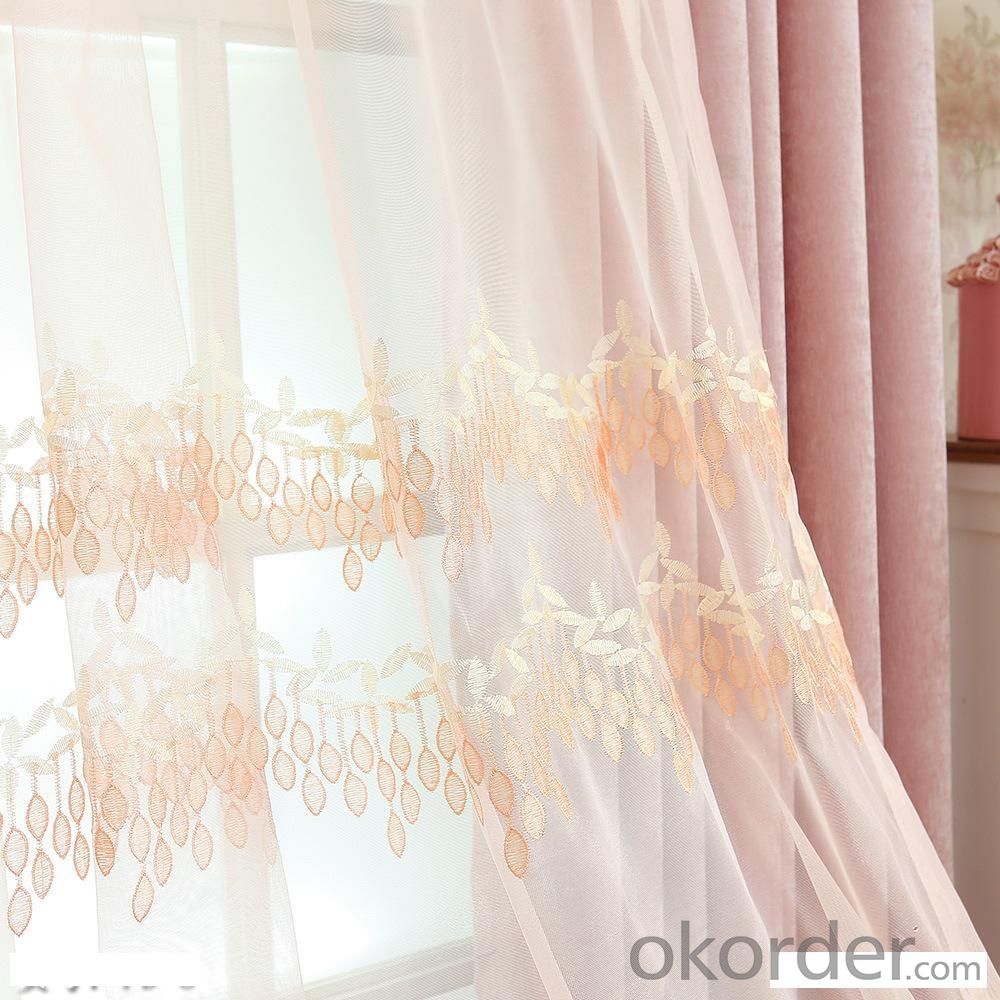
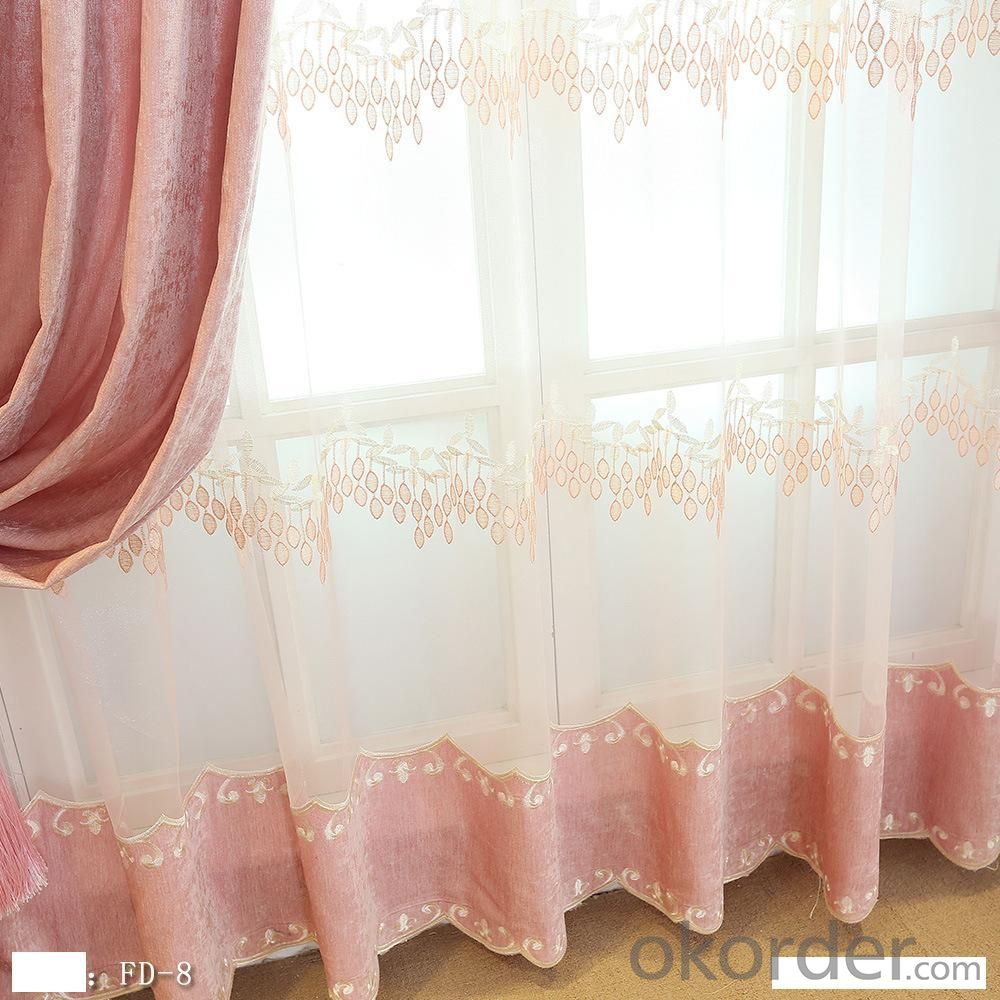
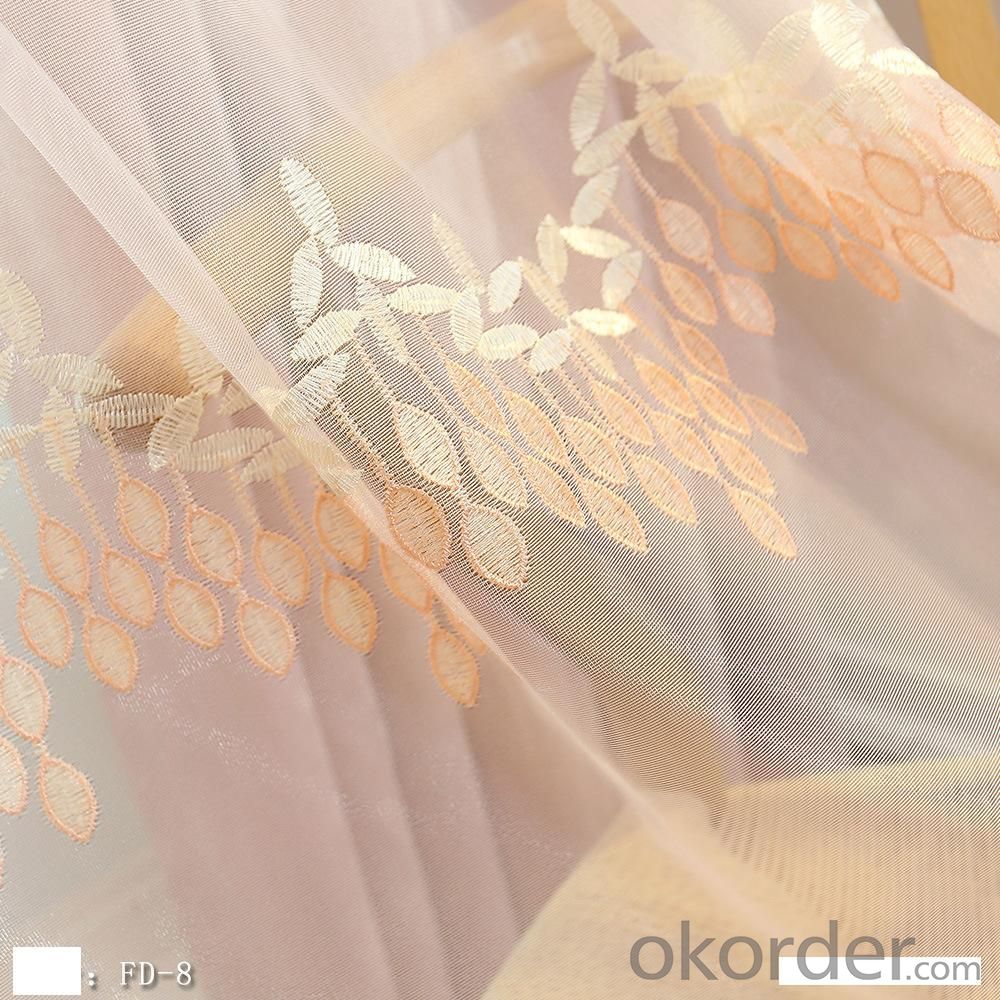
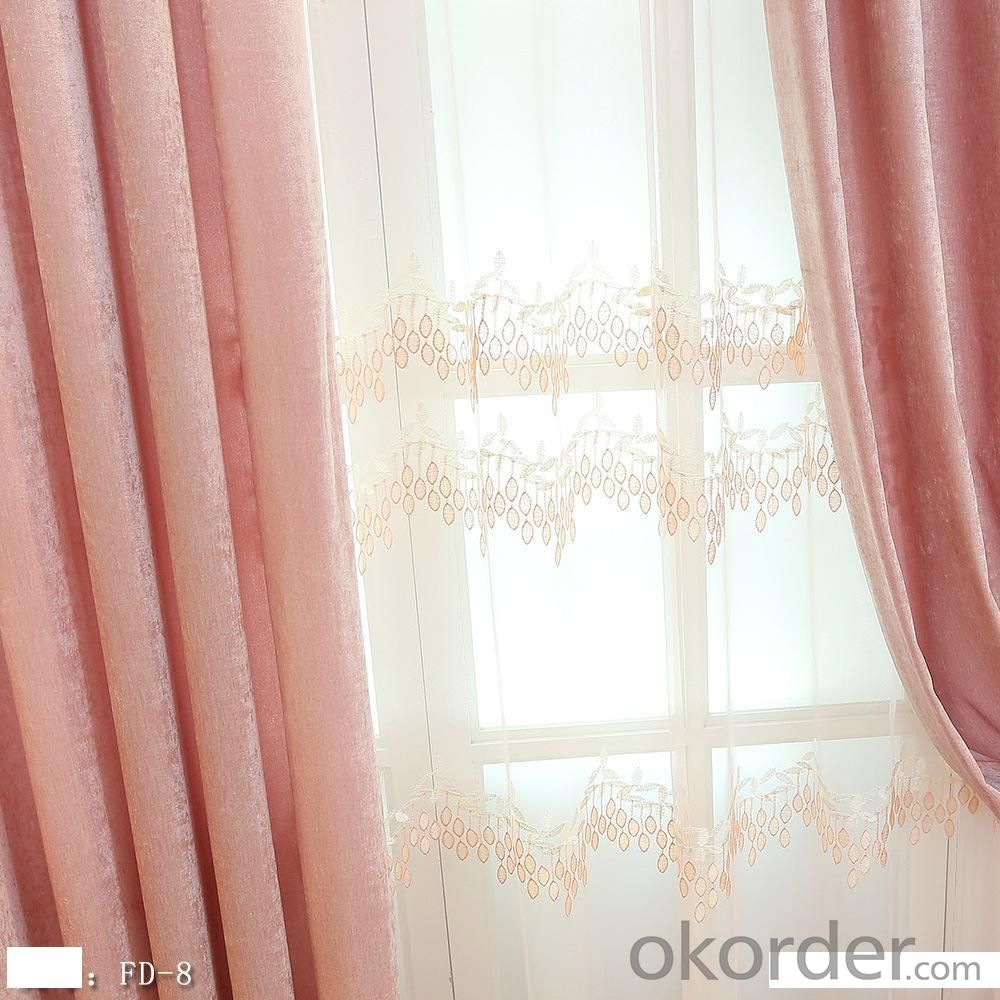
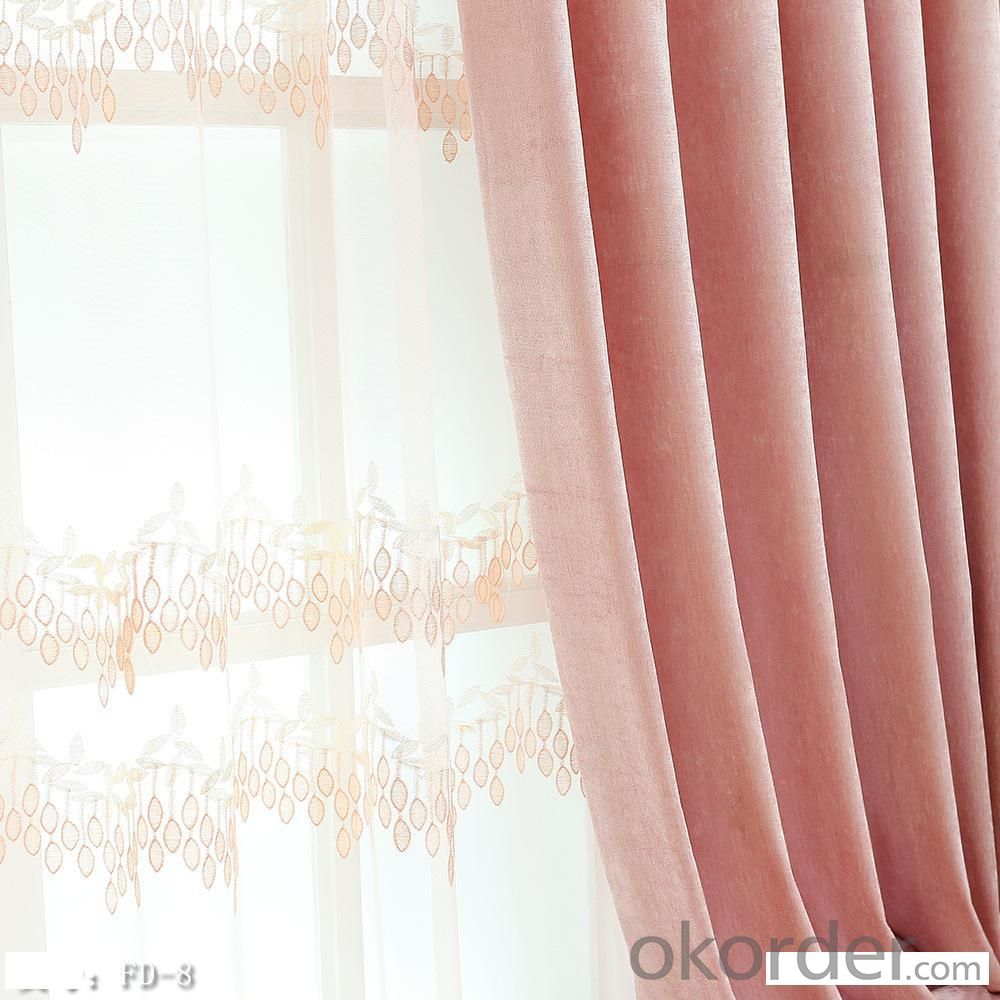
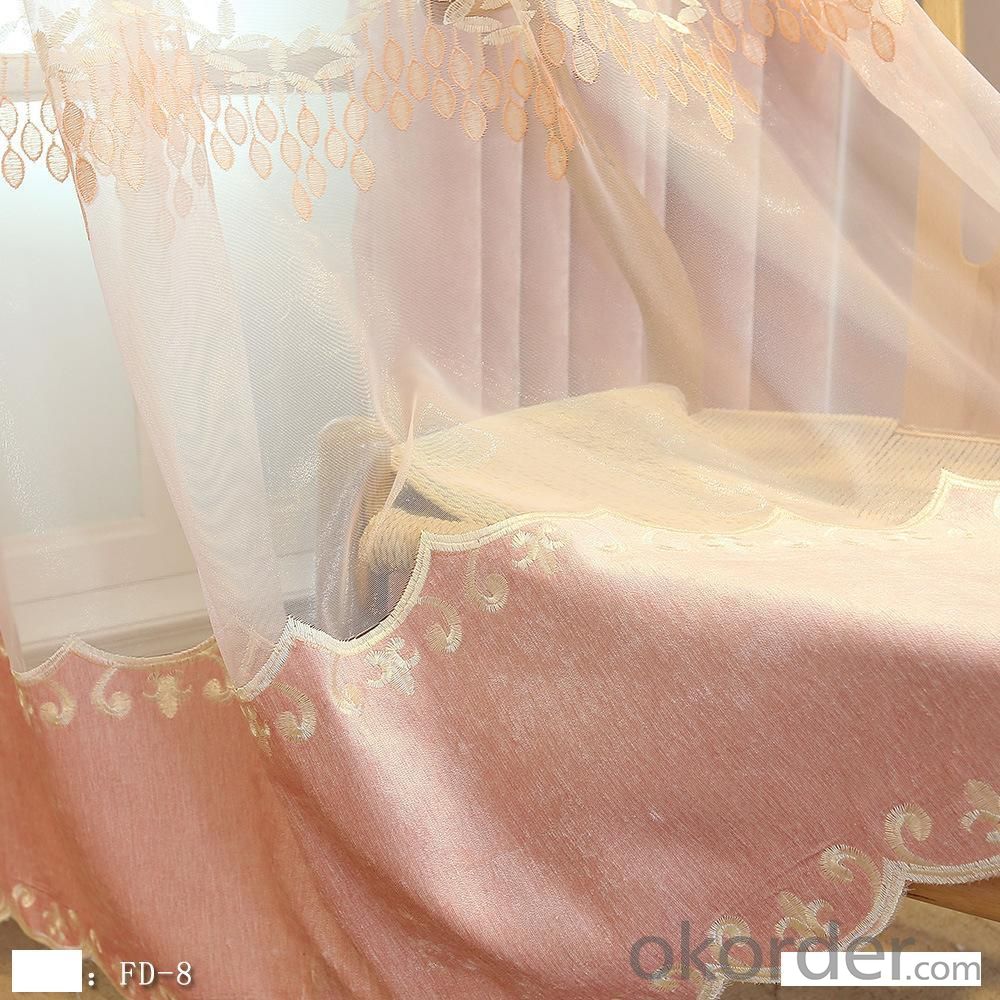
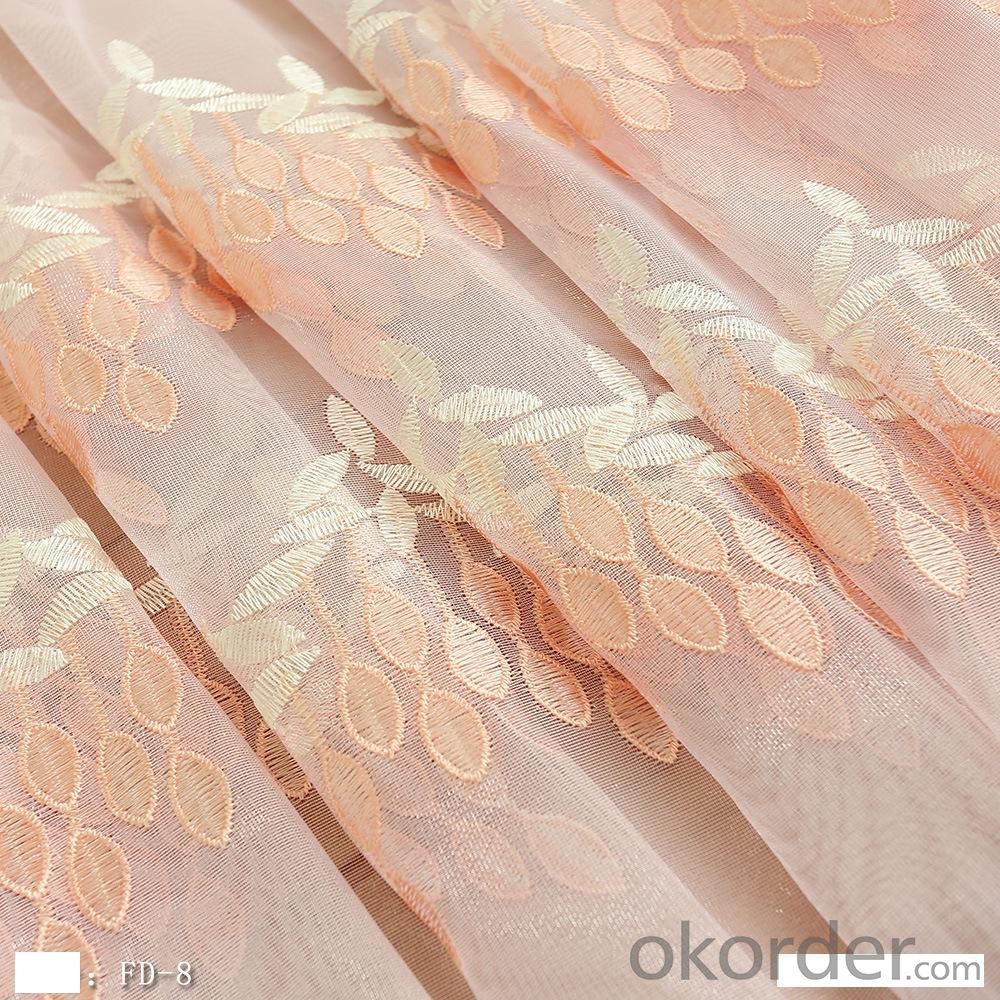
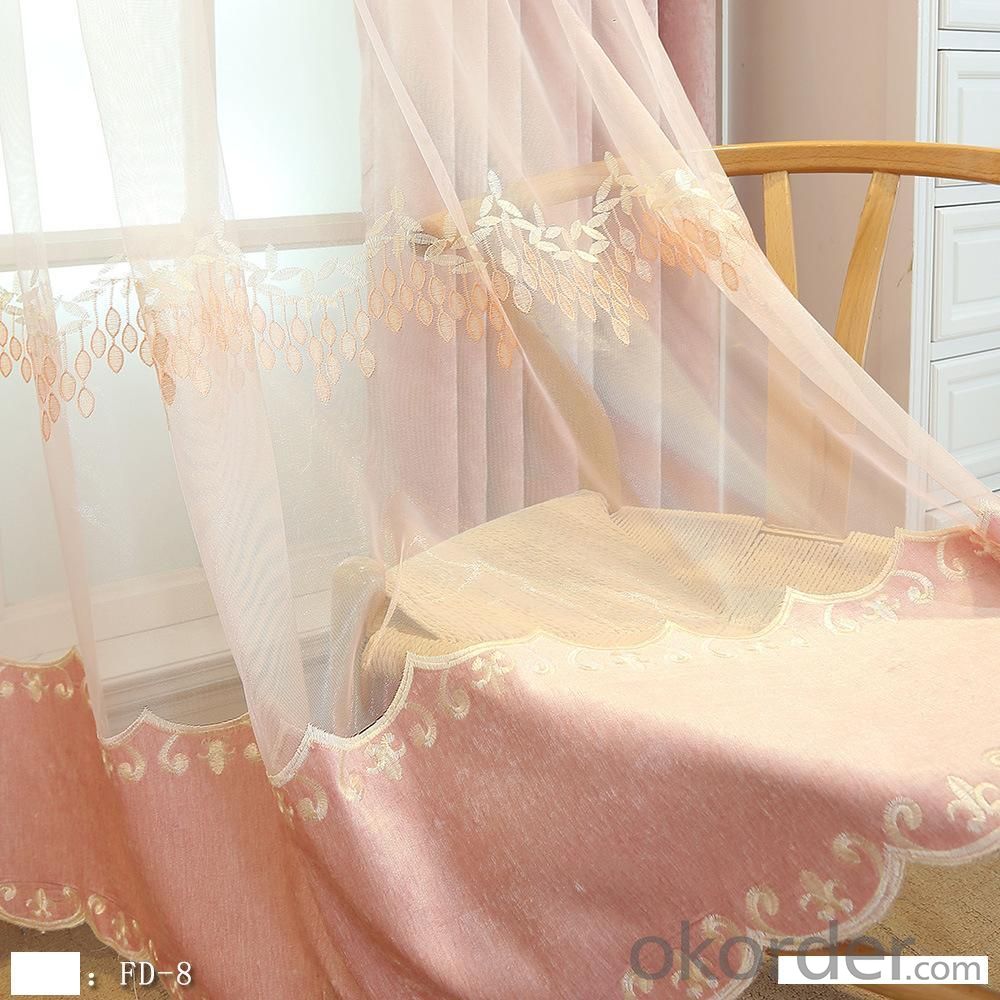
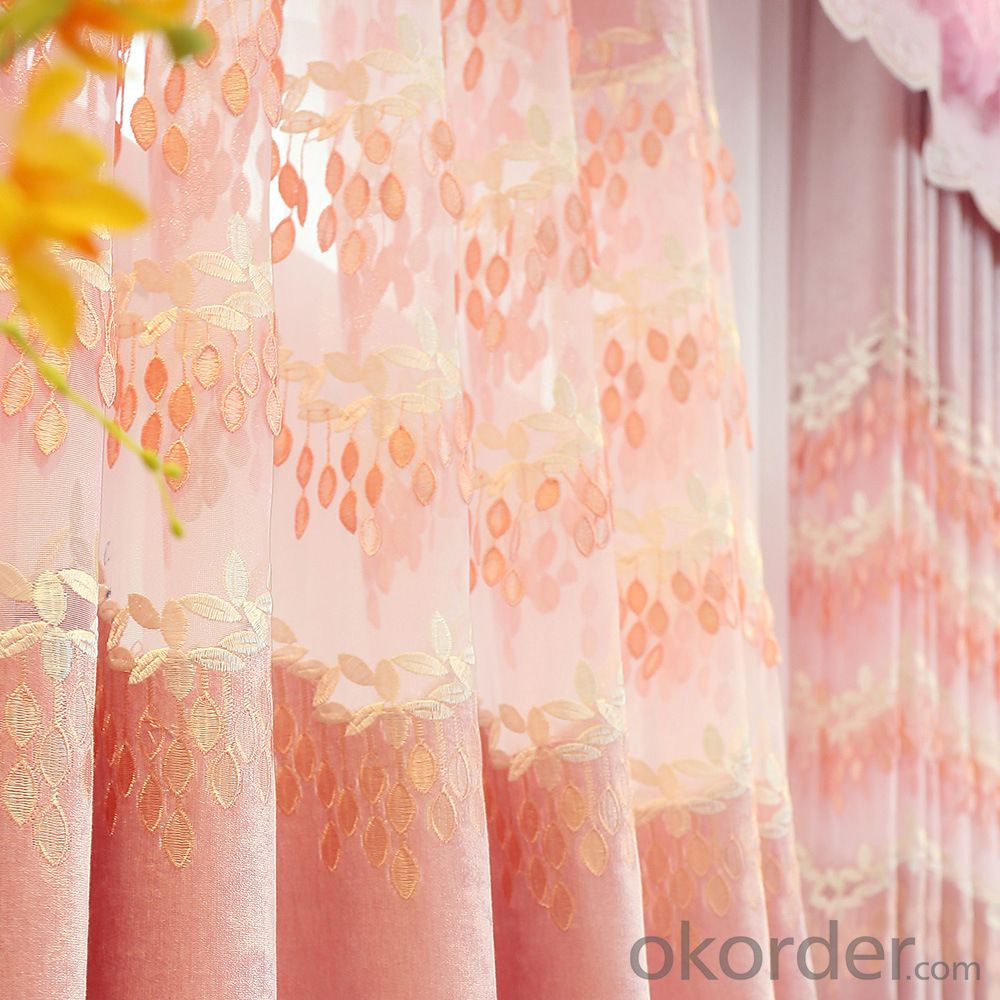
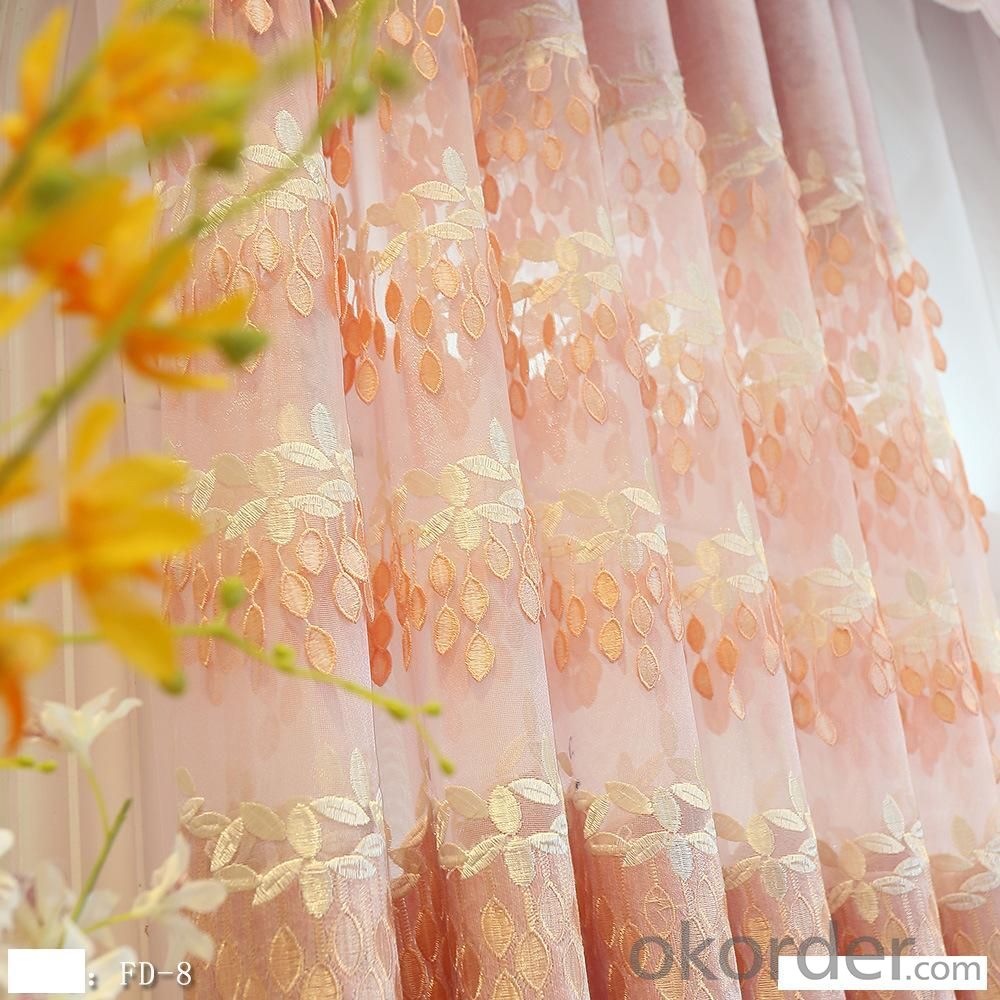
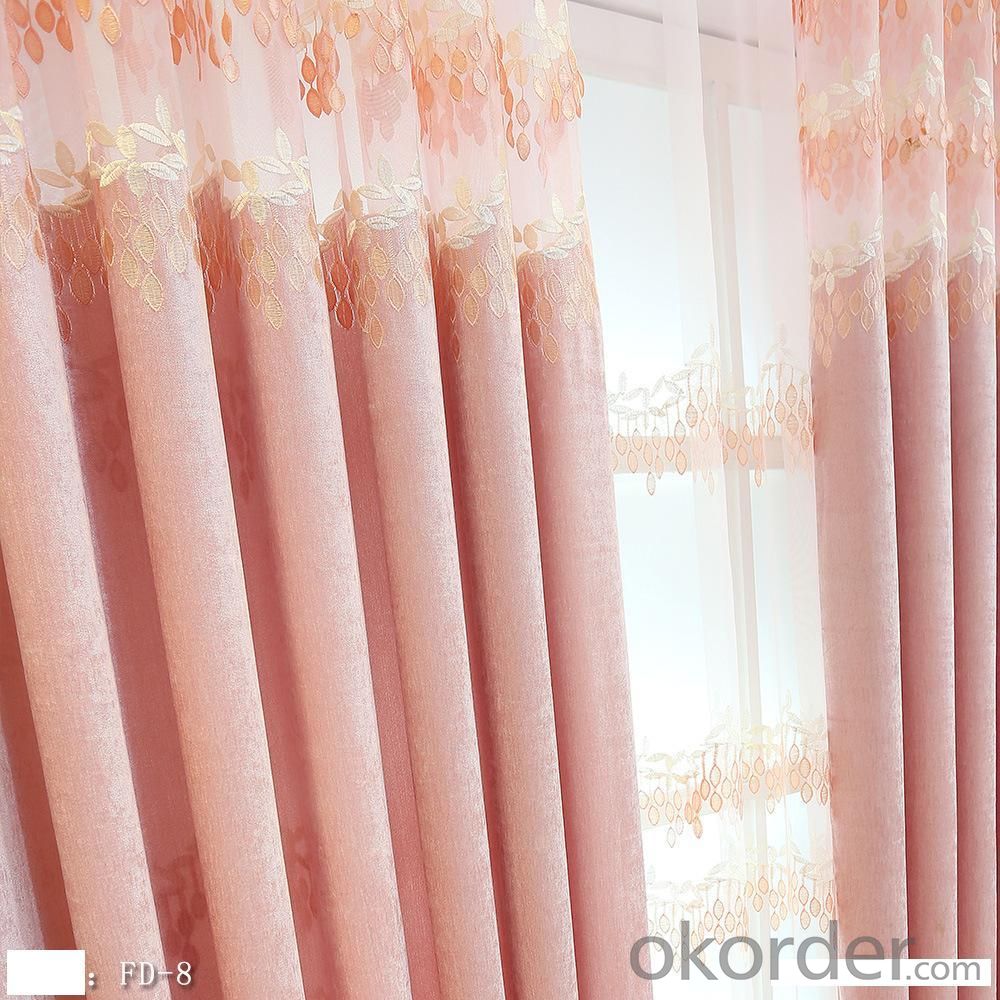
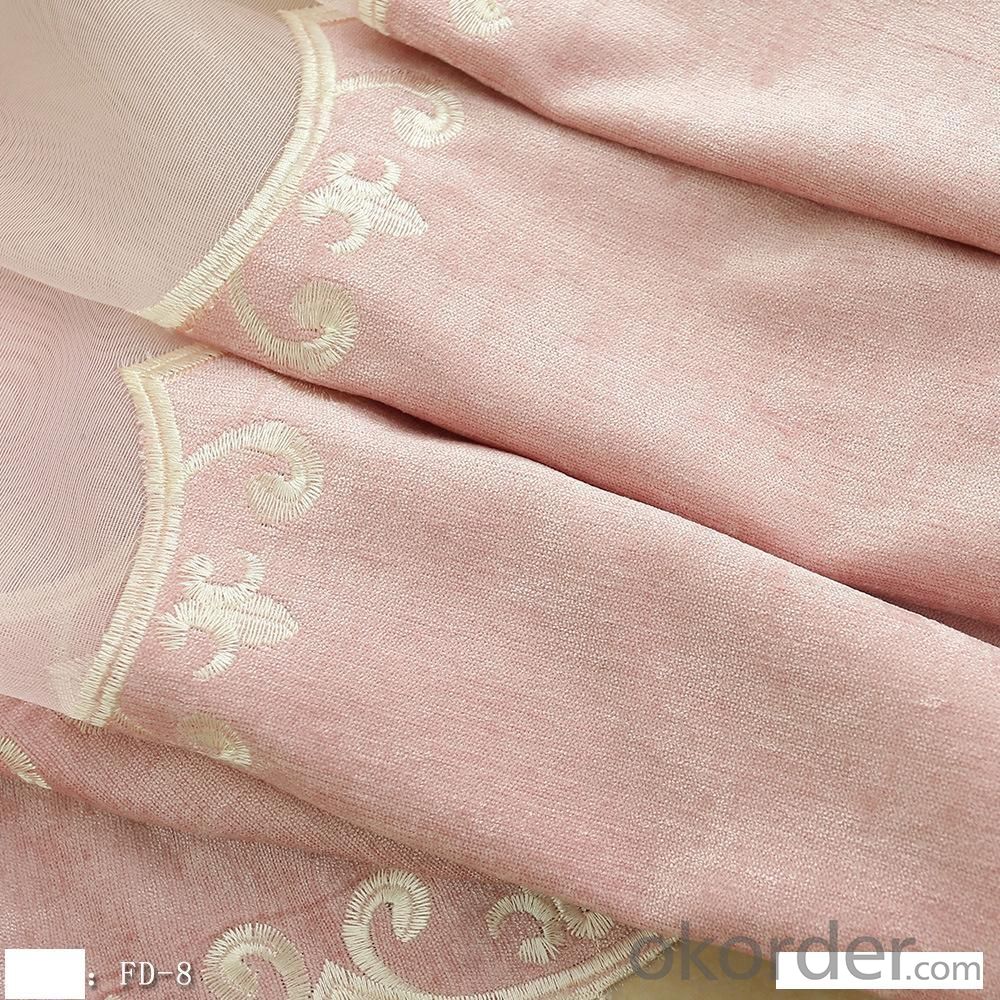
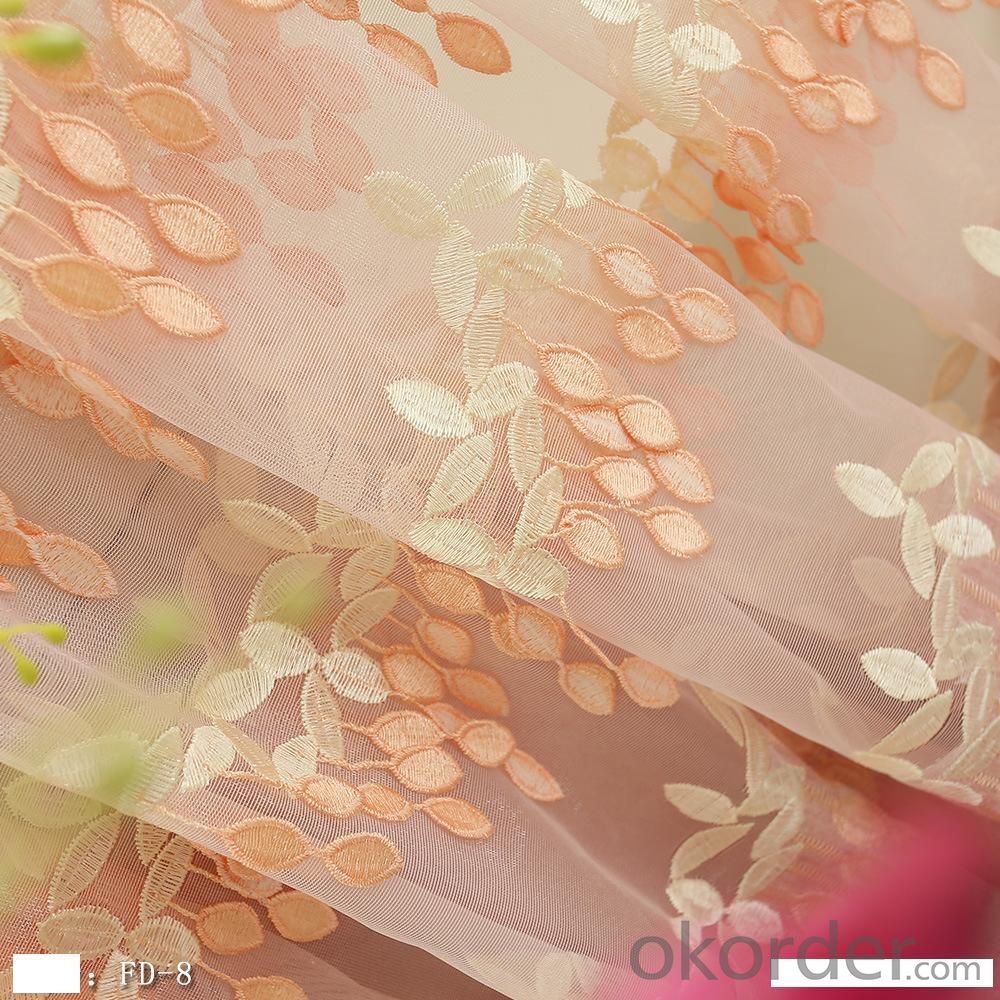
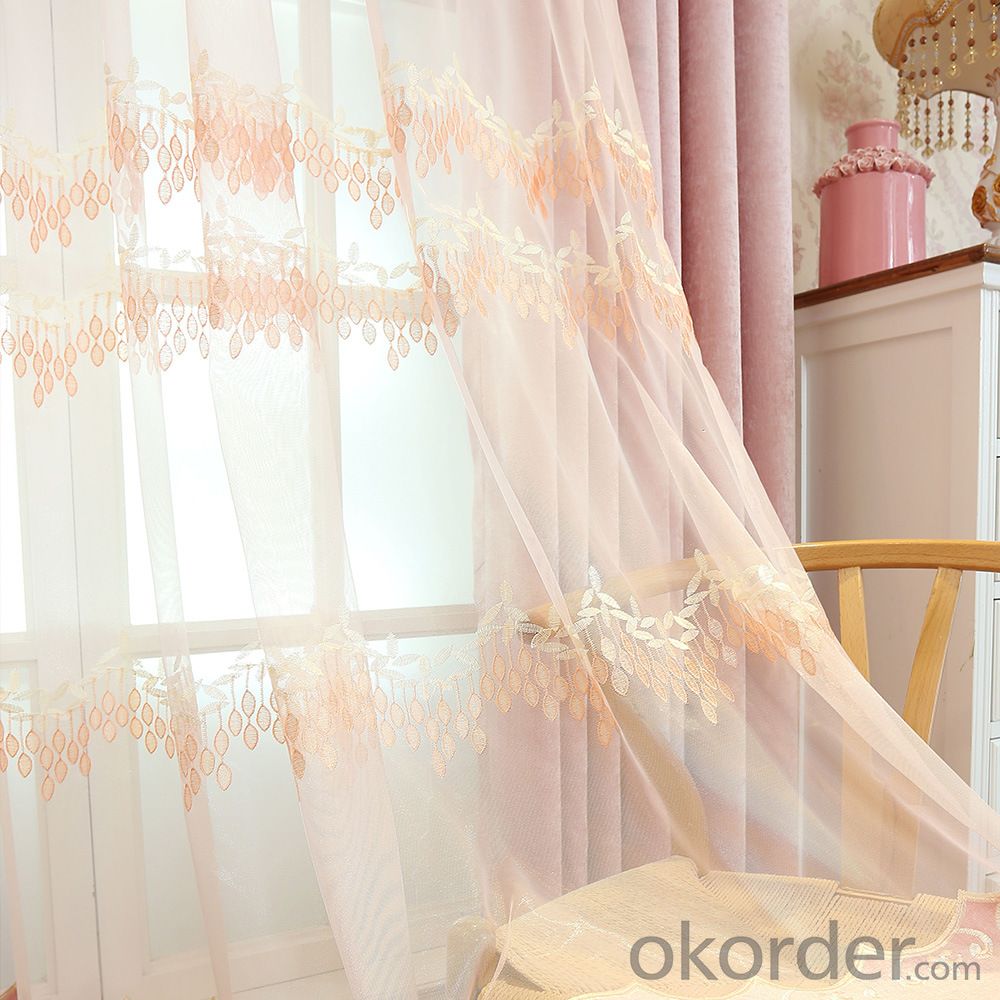
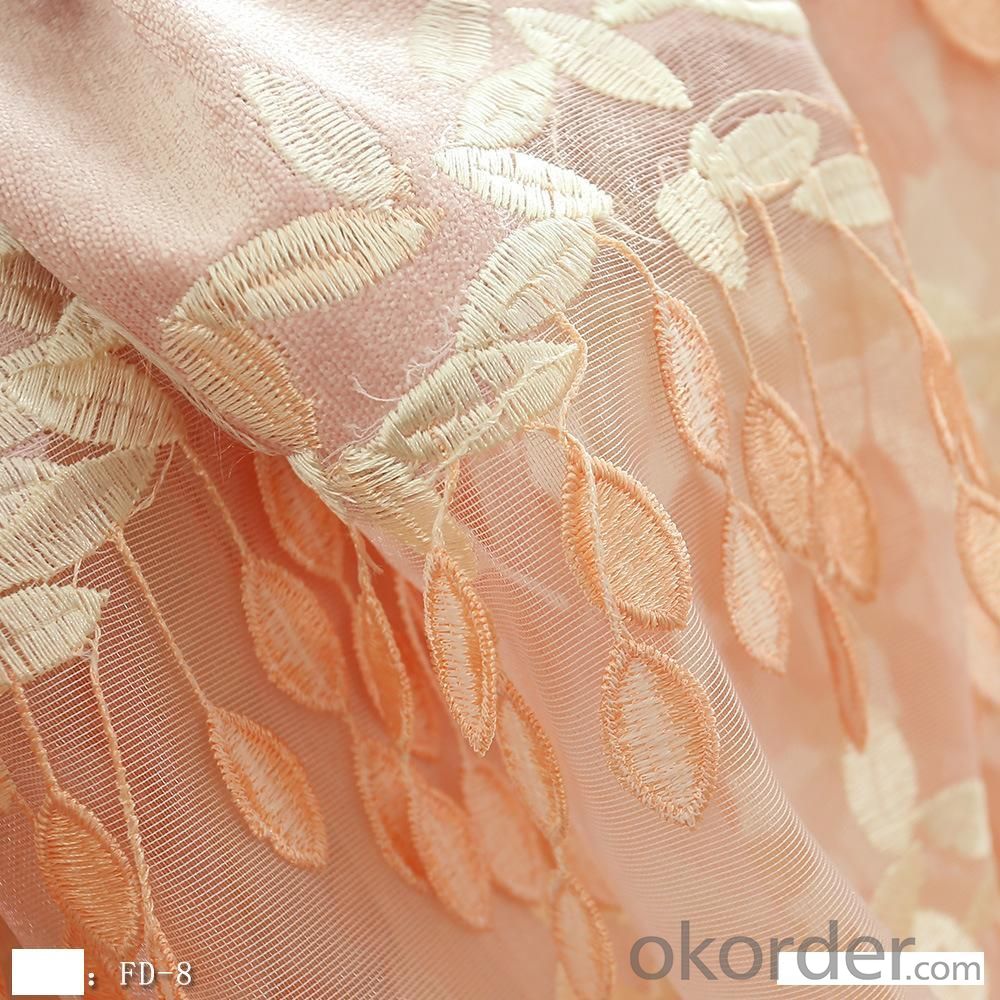
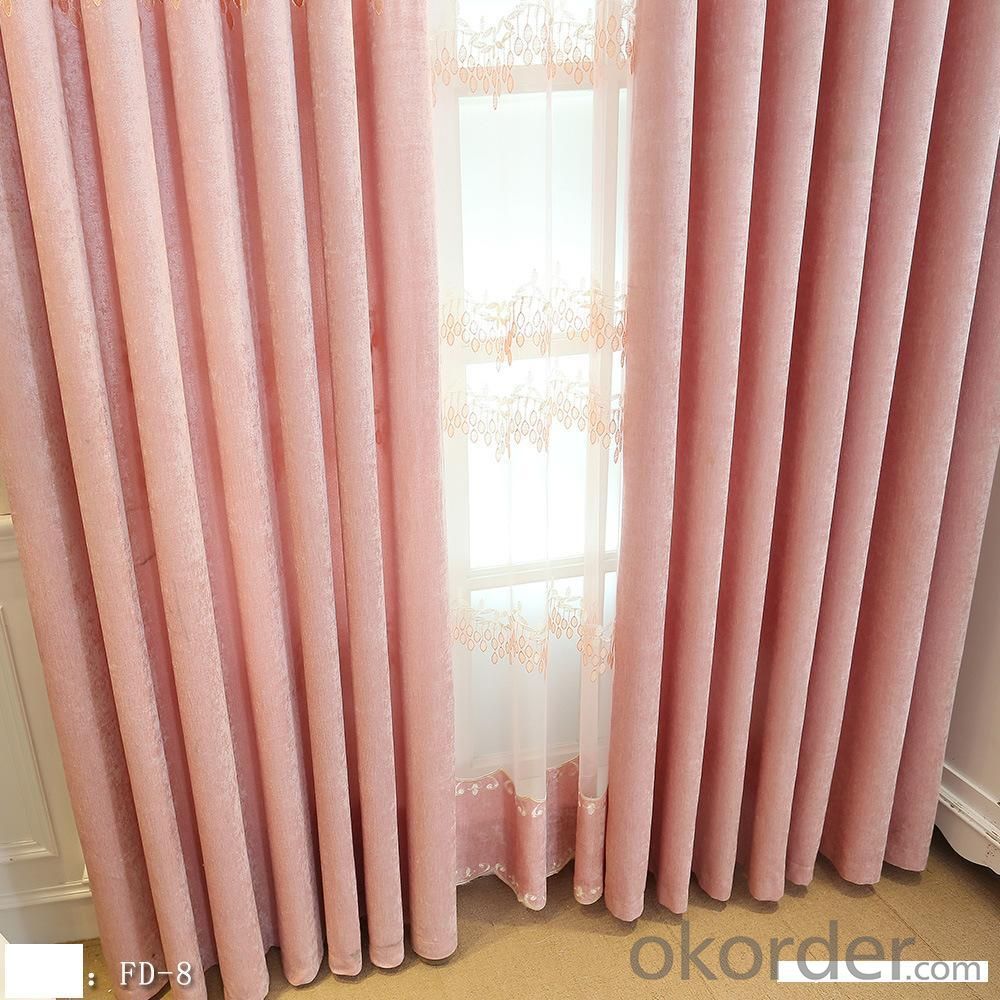

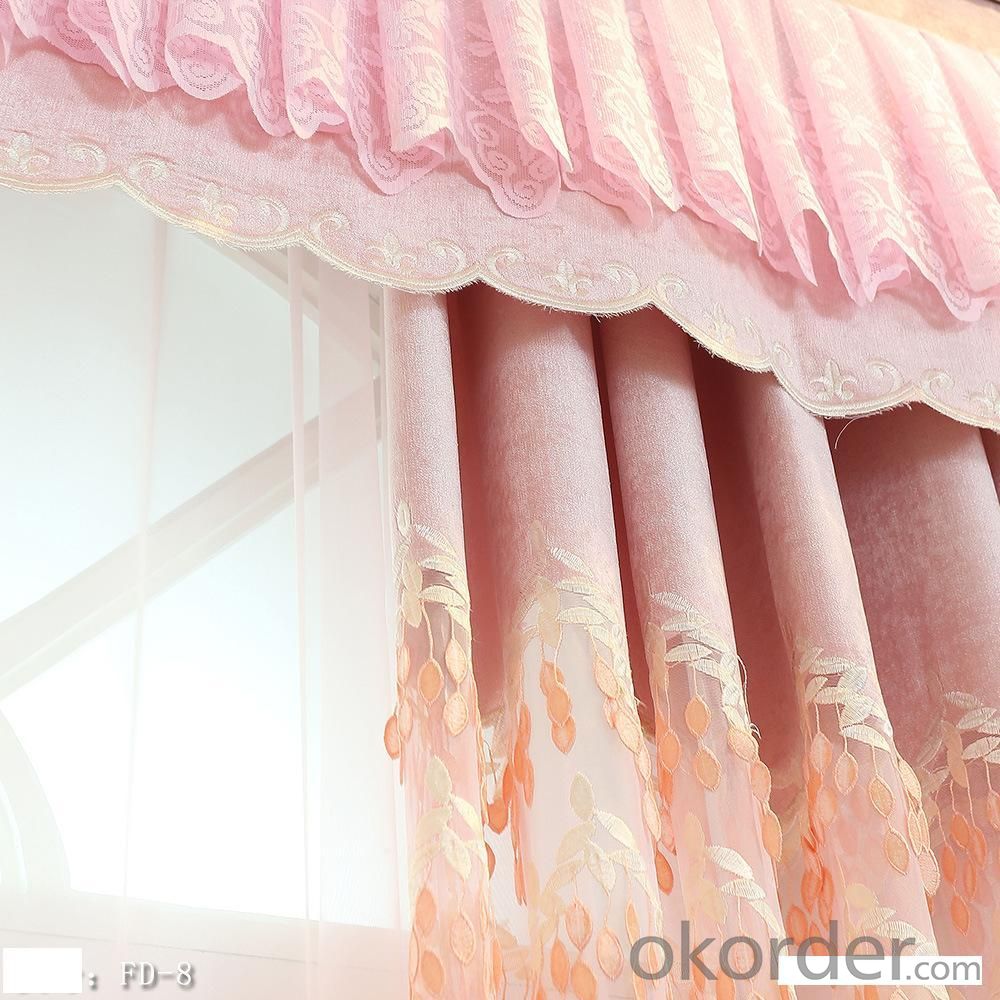
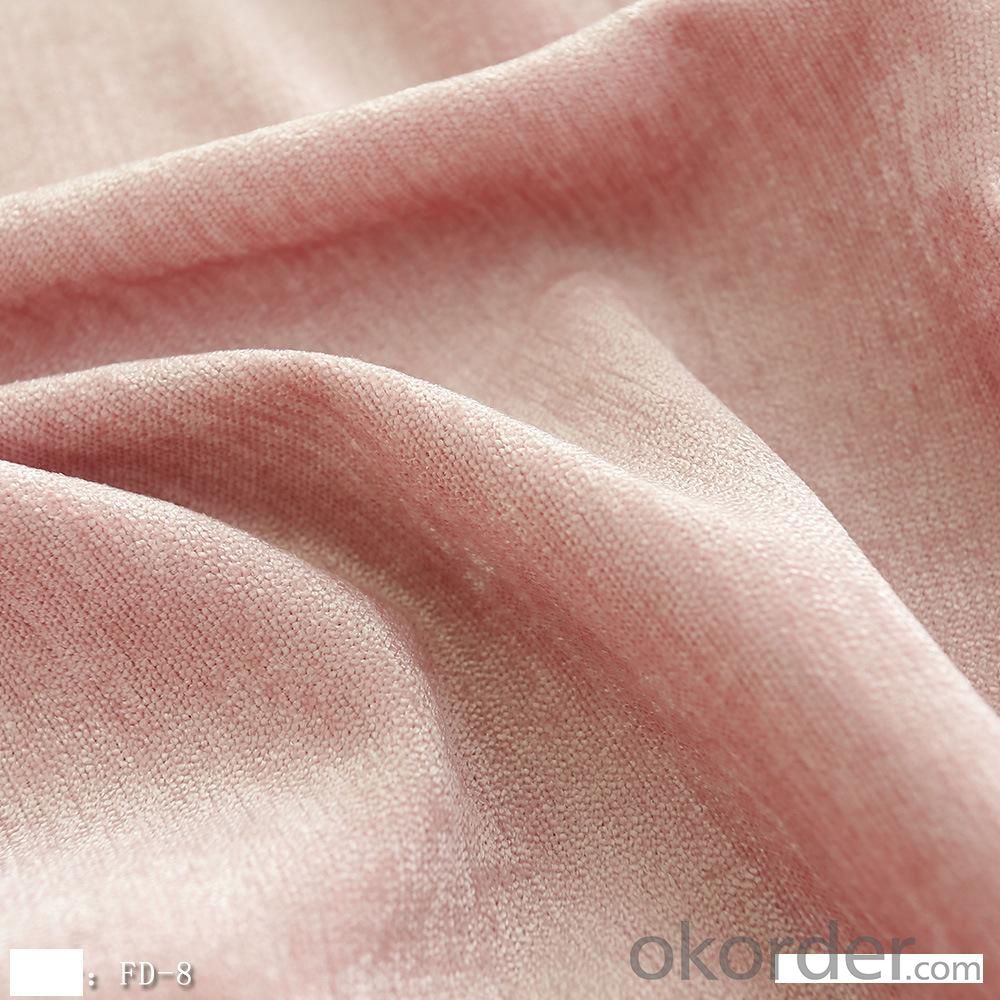
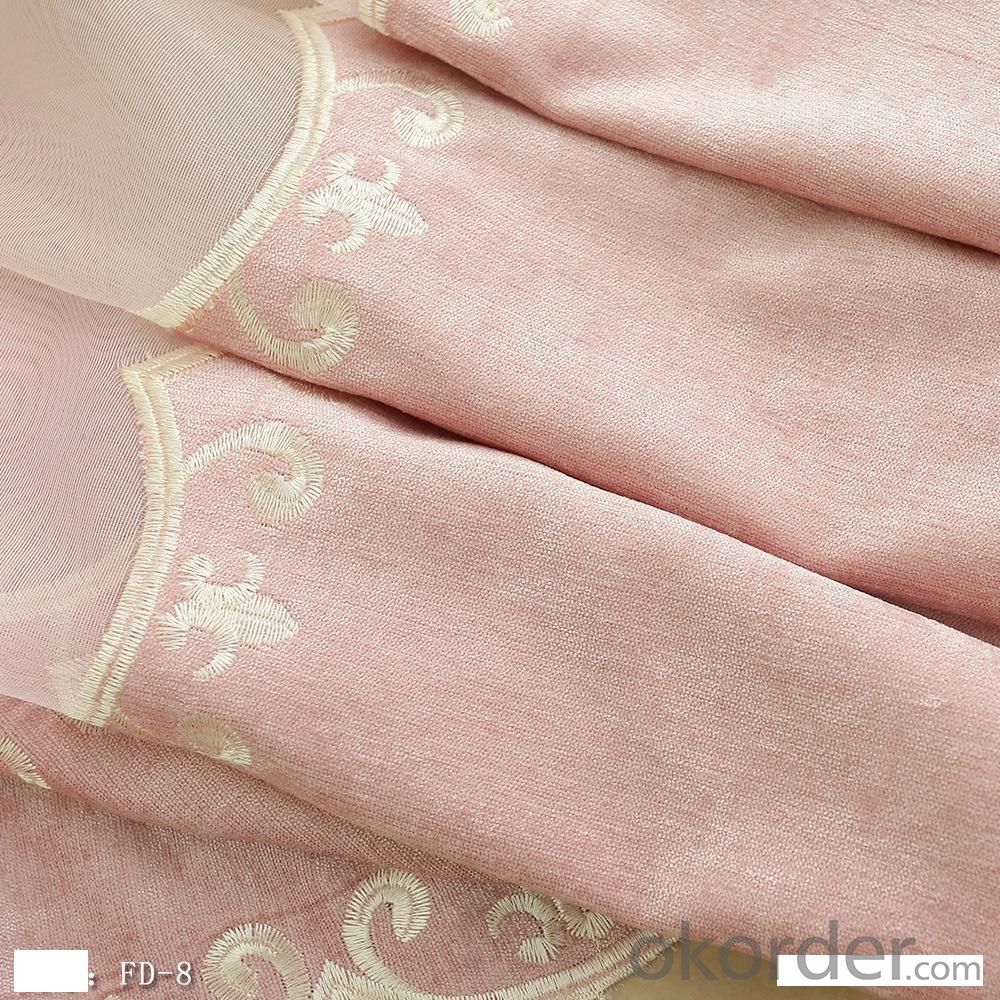
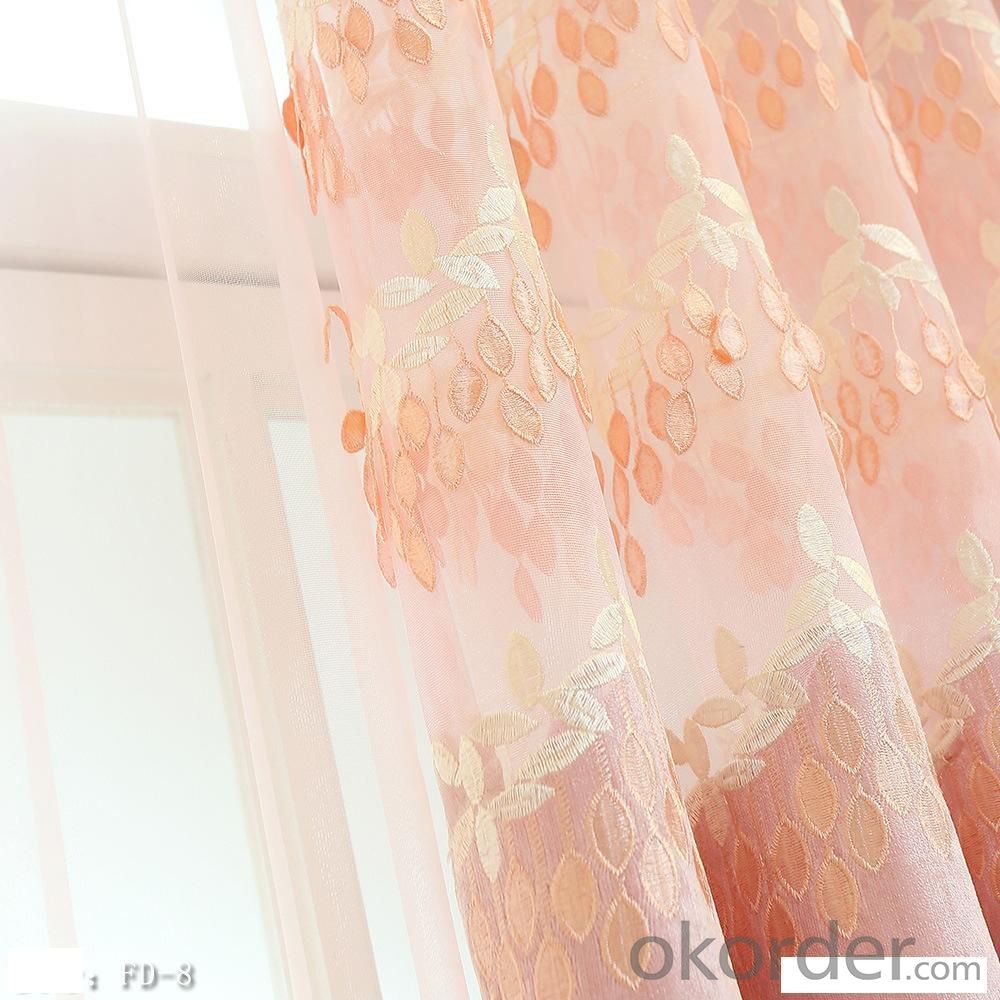
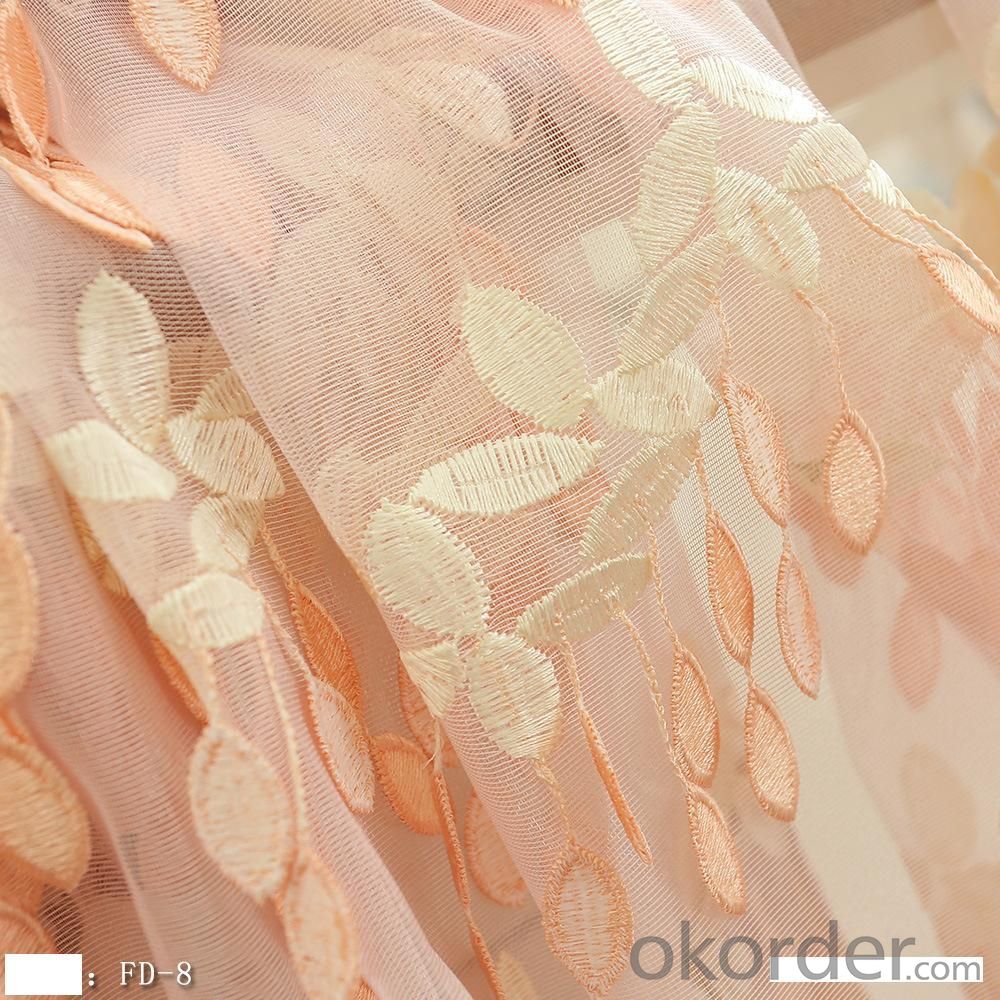
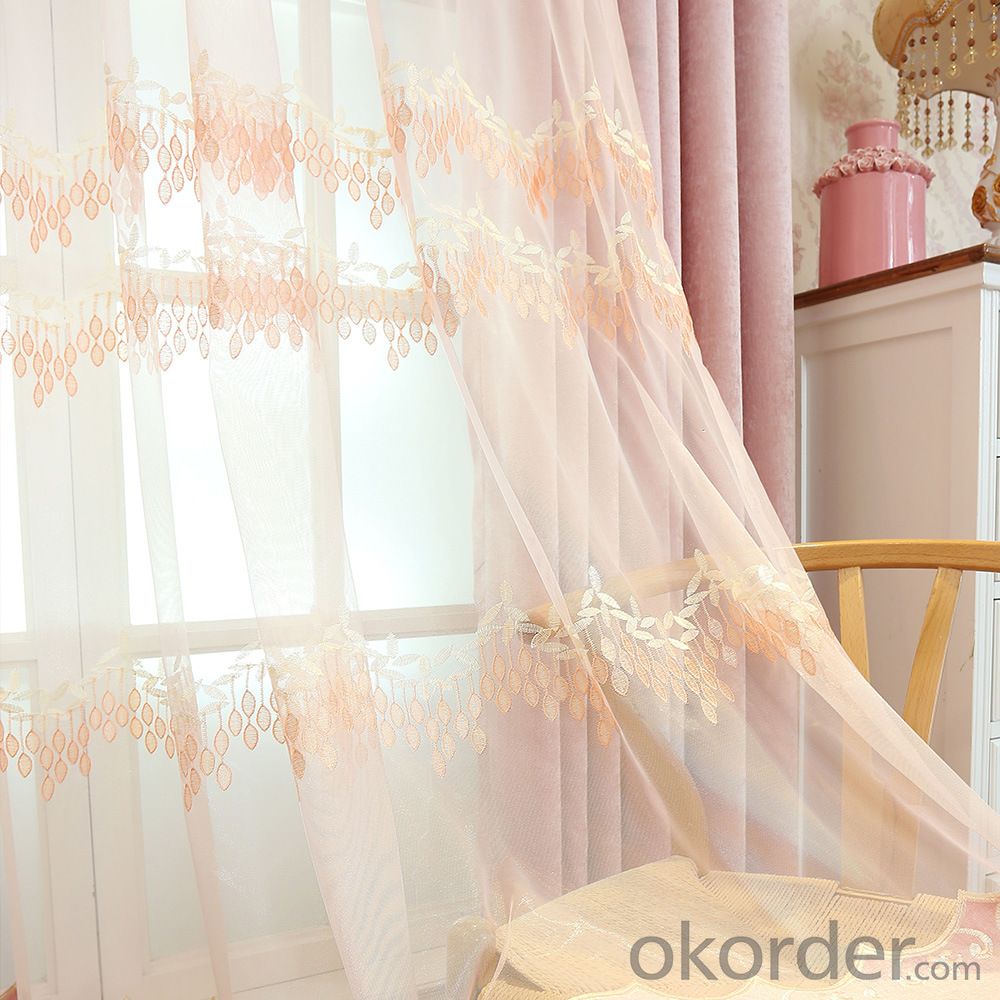

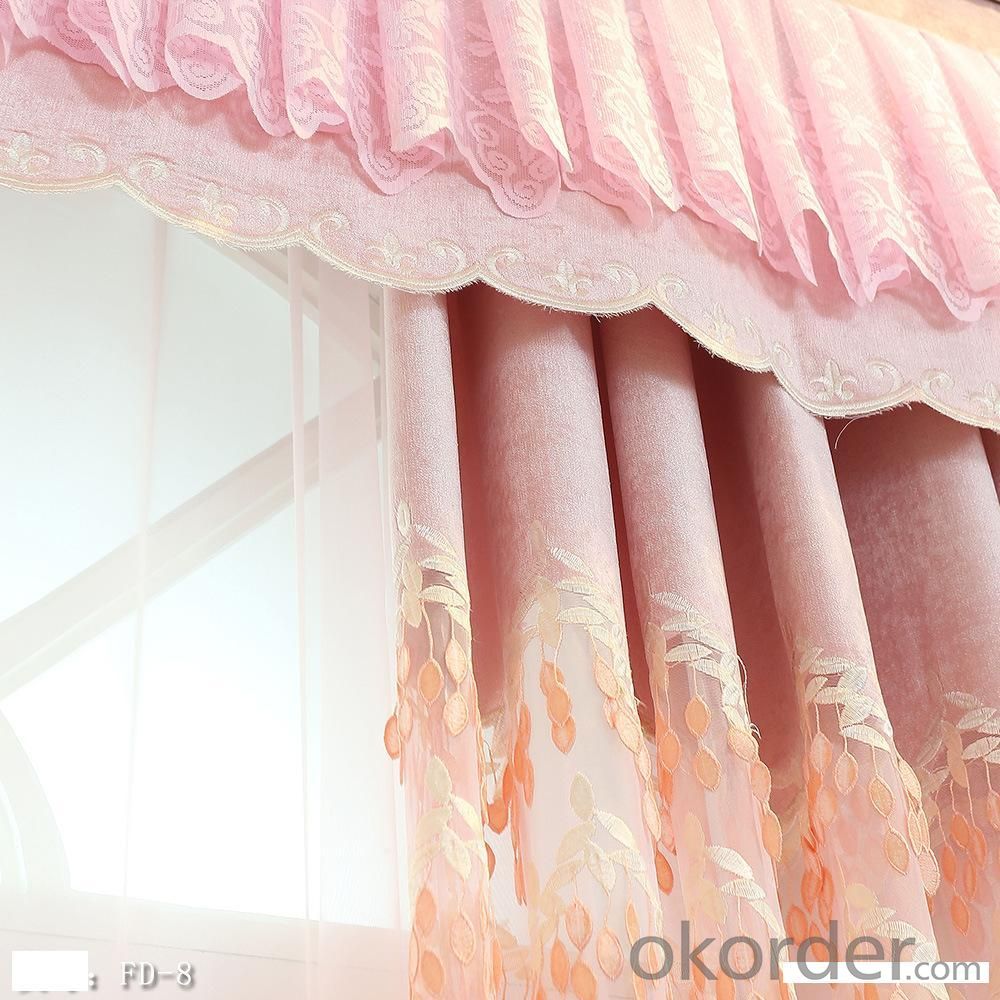
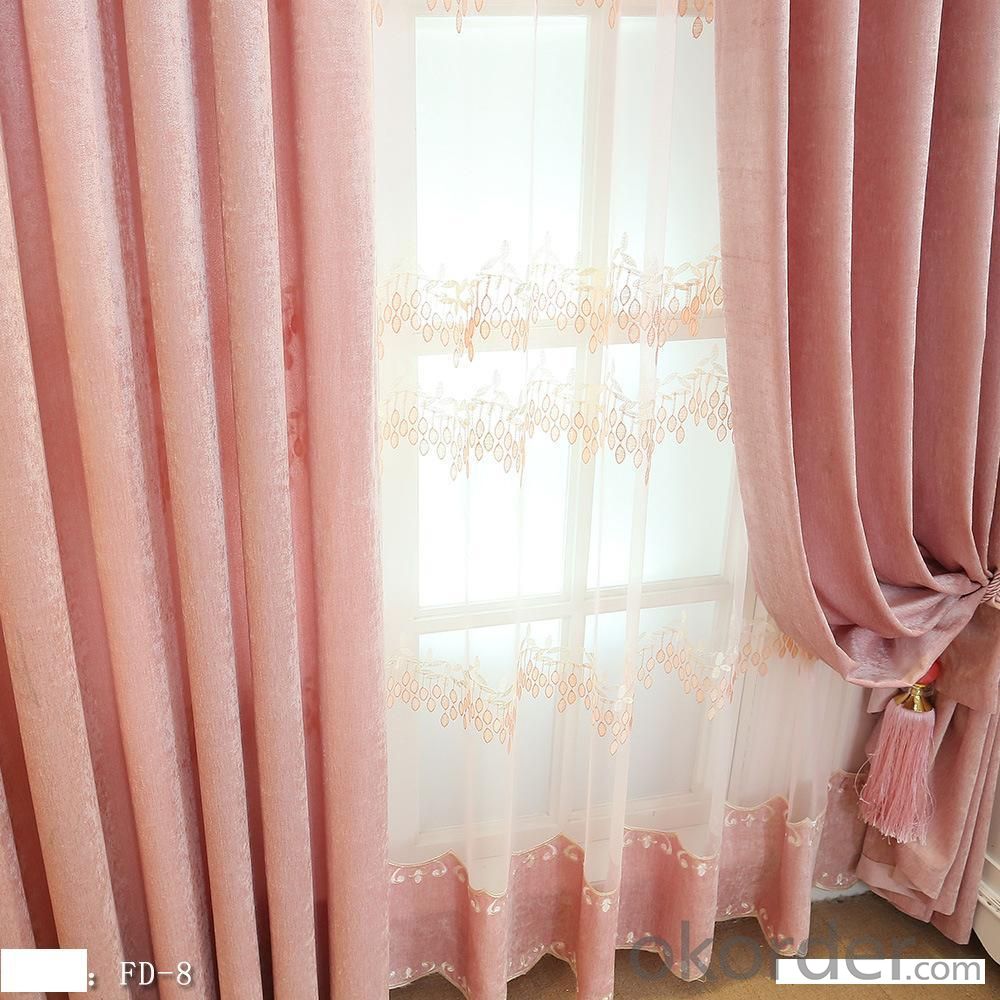
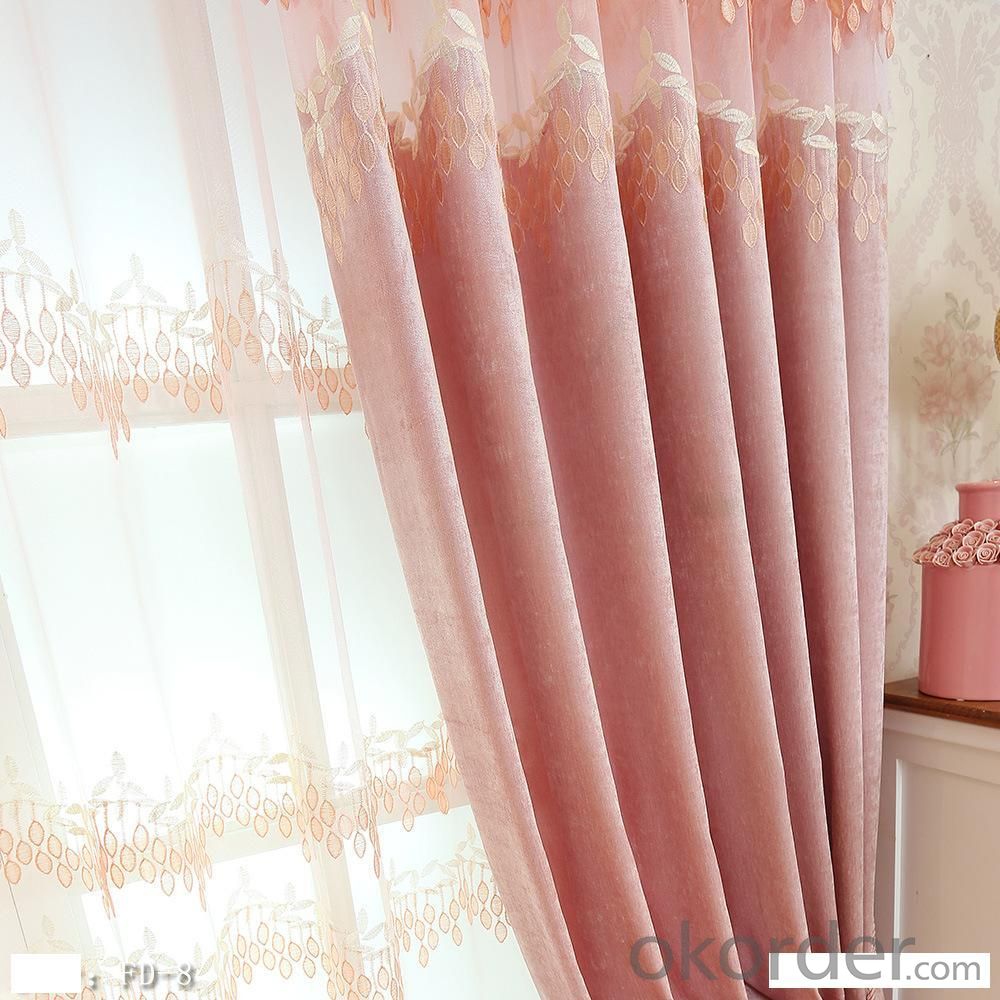

Our company dedicate to supply Chinese high quality window decoration products to the world to produce win-win situation.
Our office is located in Zhejiang, China, mainly exported all kinds of window curtains, blackout fabric, print fabric,embroidery fabric, jacquard fabric, linen fabric ect.fabric curtain which are widely used in hotel, office and apartment etc.
With years of sales and purchasing experience in the tracery industry, we have a very close connections to some professional and reliable manufacturers. We could get competitive price and high quality products as our long-term cooperative relationship. We also set up the Perfect operating system from quotation, production, quality checking and transportation to protect the client's best interests.
Furthermore, we could act as your agent to help you with all your purchasing ,quality assurance and shipping issues, saving you time and money.
Please feel free to contact us we are looking forward to forming successful business relationships with new clients around the world in the near future.

Shipping Details:
Ocean shipping, Air shipping, Courier shipping
FAQ:
1.Q:Where is your company?
A:Our factory is located in Haining which near Hangzhou.
2.Q:Do you sell curtain fabric or ready made curtain?
A:We do both.
3.Q:What kind of products do you make?
A:Blackout, dimout, sheer, embroidery , upholstery, jacquard, silk tec.
4.Q:From which port to ship?
A:Shanghai or Ningbo.
5.Q: What’s the delivery time?
A: Usually the delivery time is 30-45 days after confirming order and detail. Delivery time depending on your purchasing quantity and production season.
6.Q:Are you manufacuturer?
A:We have our cooperated curtain factory to make all kinds of curtains.
7.Q:If I have my own design,can you do OEM for me?
A:Yes,Of course,you own design is highly welcomed.We have a team highly experienced in design and manufacturing.
8.Q:Do you accept small order?
A:Yes,we do accept samller orders such as 1 meter sample or 1 roll(55-75Meters) ,different quantity is with different price,Welcome to inquire.
- Q: How do I choose the right curtain color?
- When choosing the right curtain color, consider the overall color scheme and style of your room. Opt for neutral colors if you want a timeless and versatile look, or select a color that complements or contrasts with your existing decor. Additionally, take into account the amount of natural light in the room and how different colors can affect it. Ultimately, trust your personal preference and choose a curtain color that reflects your desired atmosphere and ambiance.
- Q: Can curtains be used to create a sense of playfulness in a room?
- Certainly, curtains have the ability to create a playful atmosphere within a room. By opting for curtains that boast vibrant hues, whimsical designs, or playful patterns, one can instantly alter the ambiance of the space. For instance, curtains adorned with amusing animal prints or cartoon characters can infuse a child's bedroom or playroom with an element of fun and carefree spirit. In a similar vein, choosing curtains with bold and colorful patterns for a living room or dining area can inject the area with a playful and imaginative vibe. Furthermore, incorporating curtains with unique textures, such as ruffles or pom-pom trims, can also contribute to the creation of a playful atmosphere. Ultimately, curtains serve as a versatile and effective tool to infuse any room within your home with a sense of playfulness.
- Q: How do I choose curtains for a tropical-themed nursery?
- When deciding on curtains for a tropical-themed nursery, there are several important factors to take into account. To begin with, it is crucial to consider the overall color scheme and style of the nursery. Tropical themes typically incorporate vibrant colors like bright greens, blues, and yellows. Therefore, it is advisable to choose curtains that incorporate these colors. You can opt for curtains in a solid color that matches one of the dominant colors in the room or select curtains with tropical patterns such as palm leaves or exotic flowers. Secondly, it is essential to think about the type of fabric that would work best in a nursery. Look for curtains made of lightweight and breathable fabrics like cotton or linen. These materials will allow light to filter through while still providing privacy and protection from the sun's glare. Additionally, consider curtains with blackout lining or thermal insulation if you want to regulate the amount of natural light entering the room or control the temperature. Another important aspect to consider is the length and style of the curtains. For a tropical-themed nursery, floor-length curtains can create a striking and harmonious look, especially when paired with tiebacks or valances that complement the theme. On the other hand, if you prefer a more casual and relaxed atmosphere, you can choose curtains with a tropical print or pattern in a shorter length, such as cafe curtains or panels that reach just below the windowsill. Lastly, it is important to think about the practicality of the curtains. Look for curtains that are easy to clean, as nurseries are prone to spills and messes. Opt for machine washable curtains or those that can be easily wiped clean to save time and effort in maintaining a neat nursery environment. In conclusion, selecting curtains for a tropical-themed nursery involves considering the color scheme, fabric type, curtain length and style, and practicality. By keeping these factors in mind, you can choose curtains that not only enhance the tropical theme but also provide functionality and durability in a nursery setting.
- Q: What are the different types of curtain tiebacks and holdbacks?
- There are several types of curtain tiebacks and holdbacks available, including rope tiebacks, tassel tiebacks, magnetic tiebacks, fabric tiebacks, and hook holdbacks. Each type offers a unique design and functionality to enhance the appearance and functionality of curtains.
- Q: How do I hang curtains in a bay window?
- Hanging curtains in a bay window can be a bit tricky but with the right tools and techniques, it can be done effectively. Here's a step-by-step guide to help you hang curtains in a bay window: 1. Measure: Start by measuring the width and height of each window in the bay. Take into account the space between the windows and the floor. This will help you determine the size of the curtains you need and where the curtain rod should be placed. 2. Choose the right curtain rod: Opt for a flexible curtain rod that can be bent to fit the shape of the bay window. You can find adjustable rods specifically designed for bay windows in most home improvement stores. 3. Install the brackets: Place the brackets at the desired location for the curtain rod. Make sure they are level and securely attached to the wall. Use a drill to make pilot holes before inserting the screws. 4. Hang the curtain rod: Once the brackets are in place, insert the curtain rod into the brackets. Ensure that the rod is securely positioned and level. Adjust the rod as needed to fit the shape of the bay window. 5. Hang the curtains: Now it's time to hang the curtains. If using curtain rings, simply slide them onto the rod and attach the curtains. If your curtains have rod pockets, thread the rod through the pocket. Make sure the curtains are evenly distributed along the rod. 6. Consider tie-backs or holdbacks: To enhance the look of your bay window, you might want to use tie-backs or holdbacks. These can be positioned on the sides of the windows to hold the curtains back when they are open. This allows more natural light to enter the room. 7. Adjust and finalize: Step back and assess the curtains' appearance. Make any necessary adjustments to ensure they are hanging evenly and at the desired height. Stand in different parts of the room to ensure the curtains look even from different angles. Remember, every bay window is unique, so it may take some trial and error to achieve the desired look. Don't be afraid to experiment with different curtain lengths or styles until you find the perfect fit for your bay window.
- Q: Can curtains be used to create a sense of height in a room?
- Yes, curtains can be used to create a sense of height in a room. By hanging curtains from ceiling to floor, you can visually elongate the walls, making the room feel taller. To achieve this effect, it is recommended to choose curtains that are longer than the actual window length, allowing them to reach all the way to the floor. Hanging the curtain rod closer to the ceiling rather than right above the window frame also helps in creating the illusion of height. Additionally, selecting curtains with vertical patterns or stripes can further enhance the perception of height in the room.
- Q: How do I hang curtains on a canopy or pergola?
- Creating an enchanting and practical outdoor area can be achieved by hanging curtains on a canopy or pergola. Follow this step-by-step manual to assist you in hanging curtains on your canopy or pergola: 1. Measurement and planning: Begin by measuring the width and height of your canopy or pergola to determine the appropriate curtain size. Decide whether you prefer curtains that reach the ground or a shorter length. 2. Select suitable curtains: Seek out outdoor curtains specifically designed to endure various weather conditions. These curtains should be crafted from weather-resistant materials like polyester or Sunbrella, known for their durability and resistance to fading. 3. Installation of curtain rods or wires: Decide whether to utilize curtain rods or wires for hanging the curtains. Curtain rods offer a more traditional option, while wires provide a sleek and contemporary appearance. Install the rods or wires securely onto the canopy or pergola frame, ensuring they are level and properly anchored. 4. Hanging the curtains: Slide the curtains onto the rods or wires, ensuring they are evenly distributed along the length. If using curtain rods, attach curtain rings or clips to the top of the curtains, then slide them onto the rods. For wire installations, use curtain clips or ties to fasten the curtains to the wire. 5. Securing the curtains: To prevent the curtains from swaying in the wind, consider adding curtain tiebacks or weights to the bottom corners of the curtains. This will maintain their position and create a more refined appearance. 6. Adjusting and styling: Once the curtains are hung, step back and assess their placement. Make any necessary adjustments to ensure they are evenly spaced and hanging straight. Enhance the overall look by incorporating decorative elements like curtain holdbacks or hooks. Remember to periodically inspect the curtains for signs of wear and tear, and remove them during severe weather conditions to extend their lifespan. By following these steps, you can successfully hang curtains on your canopy or pergola, creating a cozy and secluded outdoor space to enjoy.
- Q: What are the different types of curtain tieback holdbacks?
- On the market, you can find a variety of curtain tieback holdbacks. Let's explore some of the most common options available: 1. Rope or Cord Holdbacks: These tiebacks consist of a long rope or cord that is wrapped around the curtain and secured with a hook or tassel at the end. They offer versatility and can be easily adjusted to fit any curtain style. 2. Fabric Holdbacks: These tiebacks are made of fabric strips that match the curtain material. They usually have a loop or button closure for securing and add a decorative element to the window treatment. 3. Magnetic Holdbacks: Utilizing magnets, these tiebacks hold the curtain panels in place. They are convenient as they can be easily attached to any metal surface, eliminating the need for drilling or hardware installation. 4. Tassel Holdbacks: These tiebacks feature decorative tassels at the end. They are commonly made of fabric or rope and add an elegant and sophisticated touch to the curtains. 5. Hook Holdbacks: These tiebacks use hooks that are screwed into the wall or window frame to hold the curtains back. They offer a more permanent solution, providing a clean and tidy appearance when the curtains are tied back. 6. Metal Holdbacks: Made of metal, these tiebacks come in various designs such as hooks, clips, or rings. They are durable and can provide either a modern or traditional look to the curtains, depending on the chosen style. Ultimately, the selection of curtain tieback holdbacks depends on personal preference, as well as the desired style and functionality for the window treatment.
- Q: Are there energy-efficient curtain options available?
- Yes, there are energy-efficient curtain options available. Energy-efficient curtains are designed to help reduce heat transfer between the indoors and outdoors, helping to keep your home cooler in the summer and warmer in the winter. These curtains are typically made with insulating materials such as thermal lining or multiple layers of fabric. They have a higher R-value, which measures the effectiveness of insulation, and can significantly reduce energy loss through windows. Additionally, some energy-efficient curtains also have a reflective coating on the backside, which helps to block out sunlight and reduce solar heat gain. By using energy-efficient curtains, you can minimize the need for heating or cooling appliances, leading to energy savings and a more comfortable home.
- Q: How do I choose the right curtain style for a contemporary home?
- When it comes to selecting the perfect curtain style for a contemporary home, there are several important factors to take into account. Firstly, it is crucial to consider the overall aesthetic of your contemporary home. Is it characterized by a minimalistic and sleek design, or does it exhibit a more eclectic and bold style? This will assist you in determining whether you should opt for curtains with clean lines and simple patterns, or if you can play around with more vibrant colors and patterns. Secondly, it is essential to think about the functionality that you desire from your curtains. Do you want them to provide privacy and block out light, or are they purely meant for decorative purposes? If privacy and light control are important to you, it would be wise to consider curtains that offer blackout or sheer options. Alternatively, you could even consider layering curtains with blinds or shades. Thirdly, the size and shape of your windows should be taken into consideration. For larger windows, the use of floor-to-ceiling curtains can create a dramatic and elegant appearance. On the other hand, if your windows are smaller in size, you may want to opt for shorter curtains or even valances in order to maintain the contemporary aesthetic. In addition, it is important to pay attention to the fabric and texture of the curtains. Contemporary homes often feature materials such as linen, cotton, or silk, which can add a luxurious touch. It is advisable to avoid heavy fabrics like velvet or brocade, as they may give off a more traditional vibe that does not align with a contemporary style. Lastly, do not hesitate to experiment and mix different curtain styles in order to achieve the desired look. Layering curtains, using different patterns or colors, or even incorporating curtain tiebacks or decorative hardware can add depth and visual interest. Overall, the process of selecting the right curtain style for a contemporary home involves considering the overall aesthetic, functionality, size and shape of windows, fabric and texture, and the willingness to experiment. By keeping these factors in mind, you will be able to find the perfect curtains that complement your contemporary home.
Send your message to us
Home curtain hotel curtain blackout curtain thick chenille pink curtain fabric
- Loading Port:
- Shanghai
- Payment Terms:
- TT OR LC
- Min Order Qty:
- 10 m
- Supply Capability:
- 9000 m/month
OKorder Service Pledge
OKorder Financial Service
Similar products
Hot products
Hot Searches
